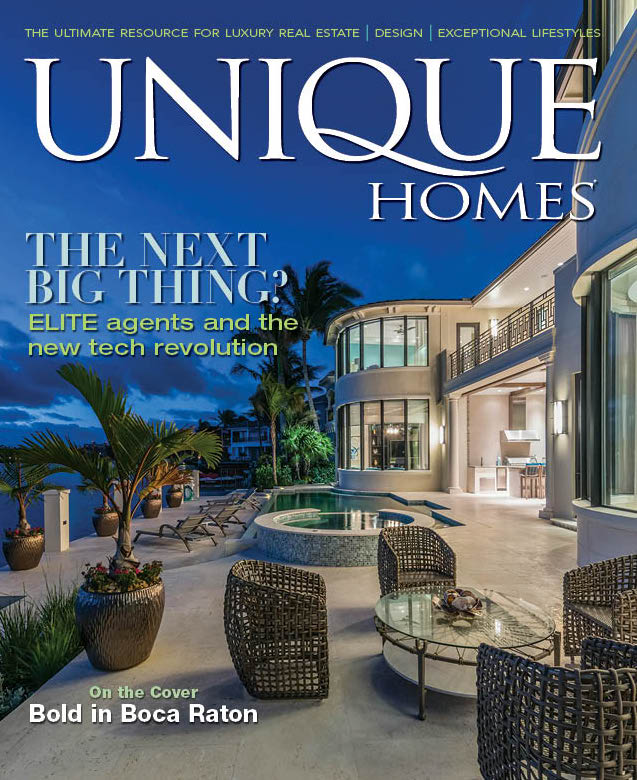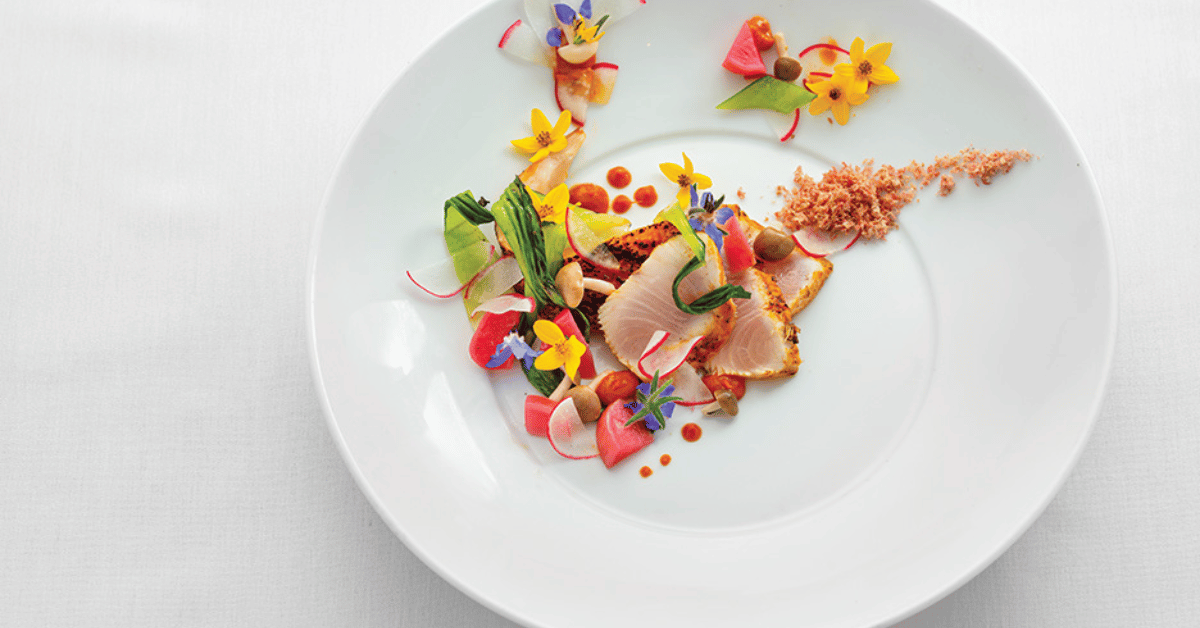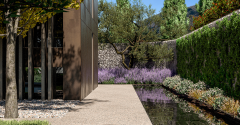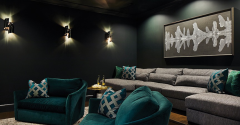The tallest residential structure in Queens, Skyline Tower, is set to launch sales of its luxury condominiums later this spring.
The tower’s robust amenity package and proximity to transit for a quick commute to Manhattan are helping to draw newcomers to the prosperous neighborhood. Skyline Tower is located in the Court Square area of Queens, which is known for its abundance of outdoor parks, restaurants and bars and artistic and entertainment venues.

Skyline Tower is the tallest residential building outside Manhattan, making it a game changer for real estate in the Queens borough and setting the stage for the future of luxury residential living in Long Island City.
Designed by Hill West Architects + White Hall Interiors, the 67-story building will offer residents striking 360-degree panoramic views of LIC, Greenpoint, Downtown Brooklyn, Midtown and Lower Manhattan. The designers anticipate that young professionals and families alike will be attracted to the tower’s unparalleled views and plethora of amenities.

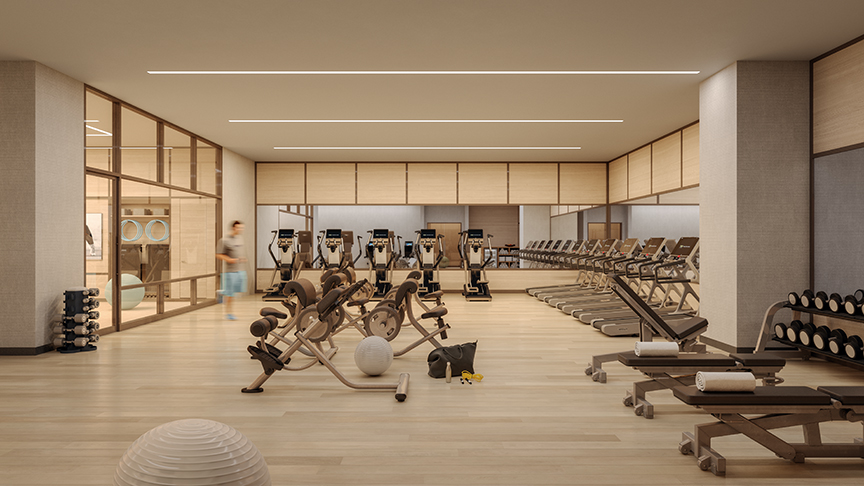

Skyline Tower features a 75-foot, temperature-controlled swimming pool, a whimsical, hot air balloon-themed children’s playroom and an extensive spa package with a cedar-lined sauna, a steam room and a massage/treatment room. LIC-based brokerage firm Modern Spaces is selling studio to four-bedroom residences from $500K to $4 million.
Photos courtesy of Binyan Studios.
Every year we select locations to highlight as Markets to Watch. This year change is underway and we take a look at some top performers, others that are beginning to transition, and a handful of under-the-radar locations that are emerging.
Austin, Texas
On track for another record with sales up more than 3 percent, Austin’s luxury patina shines ever brighter. In October, the medium home value in Barton Creek increased to $1.02 million, making it the city’s first million-dollar neighborhood. Austin’s charms include no income tax to win over newcomers, but music and tech might be tops.
Bozeman, Montana
Bozeman might seem like a sleeper on this list, but with ranches, the Yellowstone Club and Big Sky country it’s an under-the-radar hangout for demi-billionaires and billionaires.

Brooklyn, New York
No longer second best! Buyers are making Brooklyn a first choice. Median prices in the most expensive neighborhoods hit the $1 million mark. Israelis, Chinese and Western Europeans also gravitate here. It’s no surprise this New York City borough is No. 2 on Urban Land Institute’s Markets to Watch.
©istockphoto.com/Auseklis
Chicago, Illinois
By August, the Chicago area recorded as many luxury sales as in all of 2016 or 2017. Sales of $1 million-and-up properties set a record in the third quarter with a 19-percent increase over 2017. According to RE/MAX, luxury is booming in the west loop area. Upscale suburbs trail the city. Lots of new condos and stunning new buildings open doors to more urban opportunities in a market that hangs in the balance.
Dallas, Texas
Few cities have charted a post-recession course as strong as Dallas and the city remains Urban Land Institute’s No. 1 location for overall real estate prospects in 2019. But the dramatic post-recession price increases are over, say economists. Moderating prices and adjusting inventories are positive indicators that that a move back to a normal market is underway.
© istockphoto.com/Kanonsky

Denver, Colorado
Real estate’s Rocky Mountain high isn’t over yet. Denver continues to rank in the top group on many lists. In the upscale bracket, a shift toward balance is underway with the inventory of $1 million-plus homes at about seven months. Year-over-year prices are up on average 9.29 percent. Boulder remains a sweet spot for luxury, ranking 10th among cities and towns with at least 10 neighborhoods considered million-dollar.
Las Vegas, Nevada
Projections call for appreciation as high as 10 percent this year. Nevada was the fastest growing state, with new platinum communities; forward-looking, innovative architecture; and spectacular views capturing the attention of buyers looking for lifestyle and tax relief.
Hilton Head, South Carolina
Coastal South Carolina and Georgia are ground zero for demographic shifts and the growing ability among the affluent to live wherever they want — a trend just taking off. New developments including Palmetto Bluff add to demand for the Hilton Head region.
Minneapolis, Minnesota
Moving toward balance. A long-awaited uptick in homes on the market is one of several hints of a market shift. Median prices reached a record high this fall, and homes still sell quickly. Still the inventory of homes for sale is one of the lowest in the country. Upper tier and move-up brackets are less competitive.
Northern Virginia
D.C. continues to be in the top group on watch lists but Amazon’s recent announcement makes real estate in Northern Virginia much more interesting. What the prospect portends for current homeowners is uncertain, but sure to make this a market to watch in 2019.
Park City, Utah
No longer just a ski hangout, this Salt Lake neighbor is luxury’s newest player. The most desirable neighborhoods see a shortfall of inventory. Land prices increased by 25 percent with the highest number of sales occurring at Promontory. Opportunities abound: new projects at The Canyons, a large expansion of Deer Valley, a $4 billion renovation of the Salt Lake airport and a bid for the 2030 Olympics.
Wikimedia Commons / Don Lavange
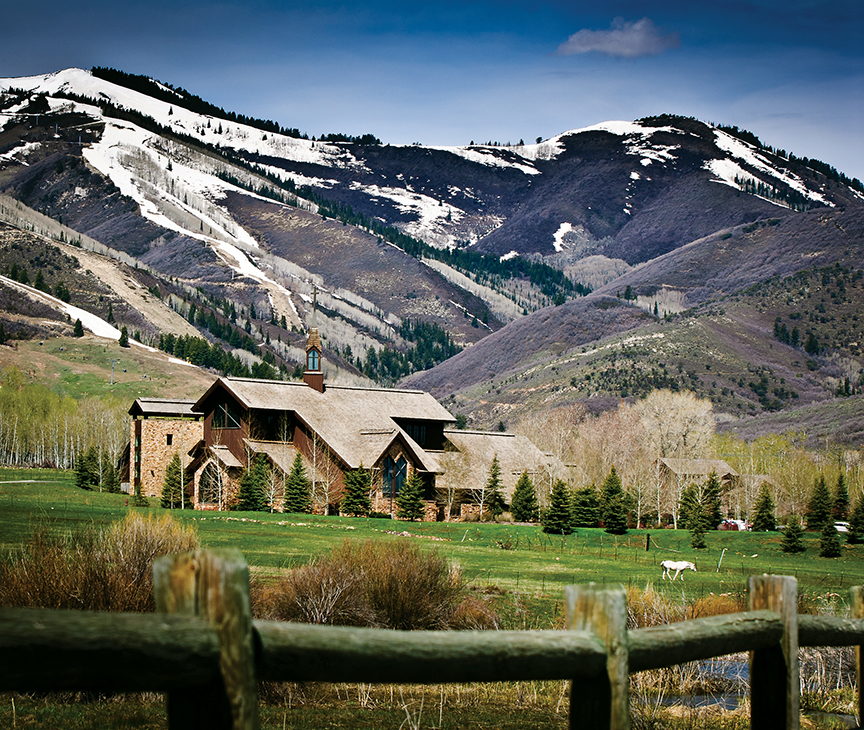

Portland, Maine
Beaches and skiing, does it get any better than that? Hipsters meet old money here. Ranked among the top 20 for entrepreneurs, the city has a growing tech industry and one of the best foodie scenes in the Northeast. Look for more new construction. Prices will continue to ease upward as more people discover this hidden gem.
© istockphoto.com/DougLemke
Santa Barbara, California
Opportunities for buyers in many California locales continue to increase as markets shift. Median prices in Santa Barbara in November were down more than 25 percent, which is good news for buyers. The area remains a prized luxury refuge and lower prices open the door for newcomers to enjoy one of the most unique locations in the U.S.
Sarasota, Florida
The city’s iconic waterfront is being reimagined with a vision to increase cultural programming and urban amenities. Median prices have been increasing steadily, up 25 percent since 2014. New construction means more inventory with more on the horizon. Agents report steady and growing interest in individuals from high tax states.
© istockphoto.com/KarolinaBorowski
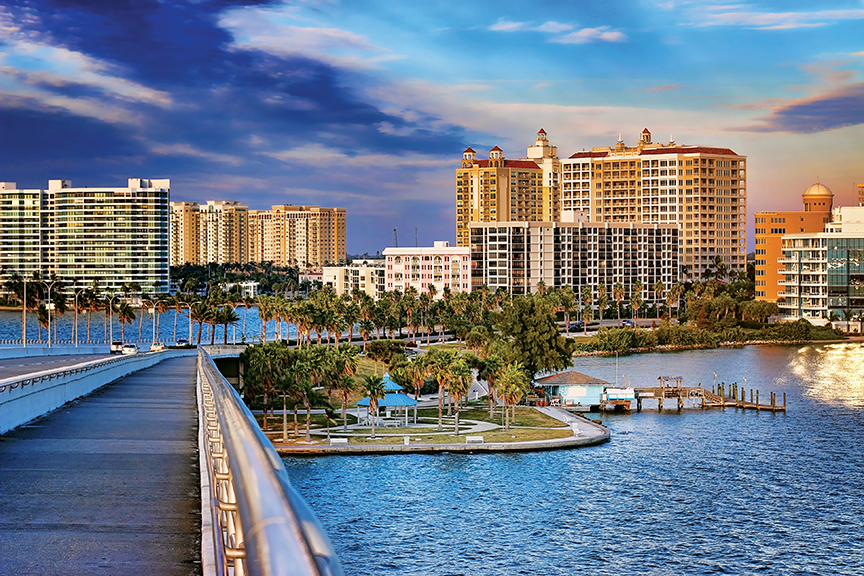

Seattle, Washington
Happier times are ahead for buyers in Seattle with active listings up by 41 percent. Even though inventories are still slim, it’s a good indication the frenzy is over. Closed sales in November were down 28 percent. Homes continue to appreciate but the increase has slowed to 5 percent. For buyers and sellers this is definitely a market to watch. The city still is in top groups in many rankings, but the frenzy is over.
Wikimedia Commons / Jeff Gunn
Toronto, Canada
Canadian Baby Boomers and Millennials came together and turned up the heat on the luxury condos in 2018; single-family home sales decreased by as much as 44 percent. While the foreign buyers tax has reduced sales to overseas buyers, it’s also opening new opportunities for locals. Local buyers will continue to drive demand for condos here.
Resort Markets
Luxury’s top performers in 2018. Not only are residences in demand, but new resorts are raising the bar for luxury and reinvigorating current markets. New developments in Turks and Caicos, including the ultra-indulgent Gansevoort Villas, turn up the heat on interest in the Caribbean. Easy reach from the U.S. and private enclaves generate new interest in the Bahamas. Cabo San Lucas, Mexico is seeing new resorts and other regions along the Sea of Cortez are seeing new development. Mandarina in Nyarit is the site of One & Only’s first collection of private homes. Owning a private island continues to be an ultimate purchase and the Bahamas is ground zero.
Thanks to:
Austin Board of Realtors
Michael Saunders, Founder and CEO Michael Saunders & Company
Anthony Hitt, President and CEO, Engel & Völkers Americas
Aleksandra Scepanovic, Co-Founder and Managing Director of Ideal Properties Group
National Association of Realtors
Northwest Multiple Listing Service, Kirkland, Washington
RE/MAX Canada
Trulia
Zillow

This story originally appeared in the Winter 2019 issue of Unique Homes Magazine.
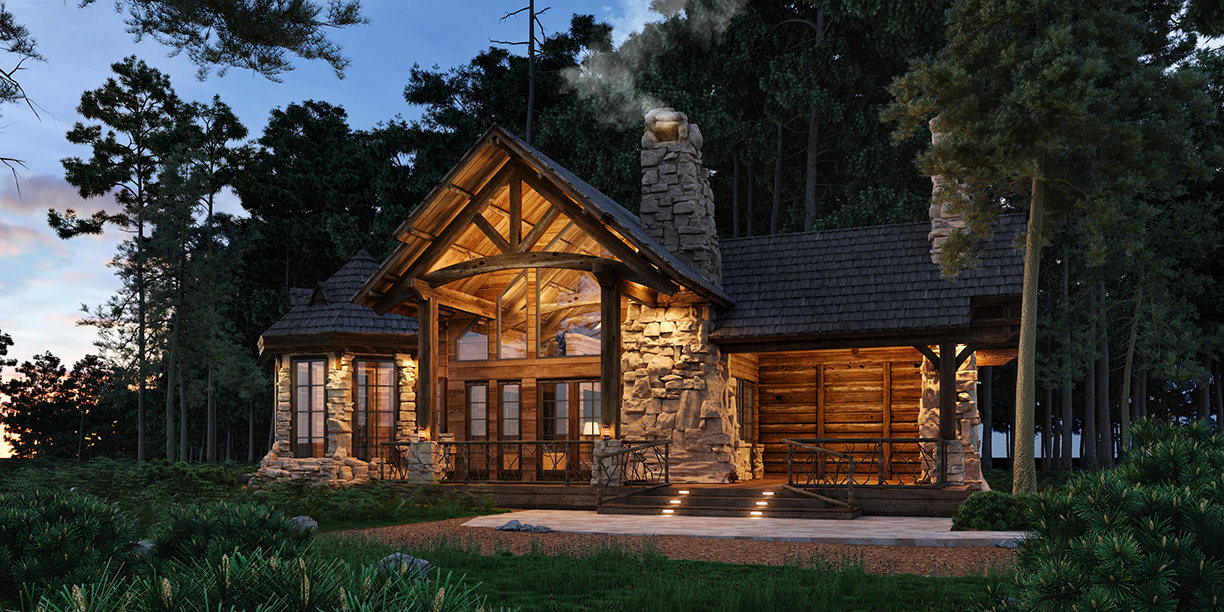
Developed by Dream Hotel Group and designed by Nunzio Marc DeSantis Architects, The Chatwal Lodge will be nestled among 26 acres along the wooded shores of the 1,000-acre Toronto Reservoir.
The five-star luxury retreat is expected to open in spring 2020 with 34 private villas and suite accommodations, refined rustic design and world-class, farm-to-table culinary experiences by DUCASSE Paris, founded by multi-Michelin-starred chef Alain Ducasse.
The groundbreaking ceremony for this exciting development took place in December, and featured New York State Assembly Member Aileen M. Gunther and Bethel Town Supervisor Dan Sturm as keynote speakers, leading members of the Dream Hotel Group team Chairman Sant Singh Chatwal, CEO Jay Stein, and Vice President of Operations, Luxury Division Ashish Verma, as well as Chapin Estate Developer Steve Dubrovsky, Architect Nunzio DeSantis, and Granite Associates Chairman & CEO Alan Gerry, among others.
Rustic and refined, The Chatwal Lodge offers an elegant and charming play of details literally carved straight out of the woods from which it stands. The luxurious hideaway features hand-hewn timbers, oversized stone fireplaces and mighty trunks of 40-foot white pine trees towering from floor to ceiling in the Main Lodge.
New York State Assembly Member Aileen M. Gunther:
“We’re grateful for Mr. Sant Chatwal and his Dream Hotel Group team bringing The Chatwal Lodge to the region. The caliber of this project is remarkable, and, once open, will become a world-class destination and an extraordinary addition to both New York State and Sullivan County.”
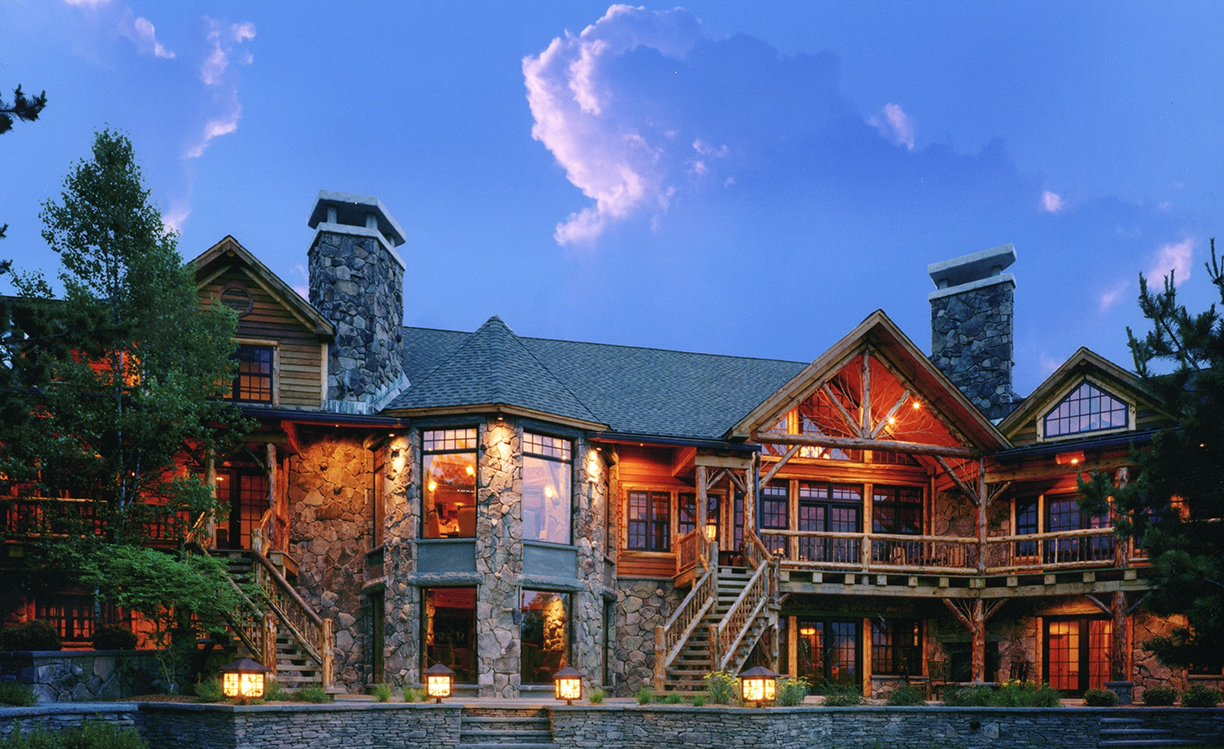
Luxurious meeting and event venues located at water’s edge are ideal for corporate retreats, social events and lavish destination weddings. Harmonizing with nature, its serene spa offerings will also include some of the most desirable wellness services.
The opening of The Chatwal Lodge is part of a larger economic development plan for the town of Bethel, New York. The Chatwal Lodge is located within The Chapin Estate along the shores of Sullivan Country’s two largest lakes.

Sullivan County has seen an increasing number of visitors due to its vast recreational activities, as well as growing arts and culture community. The Chatwal Lodge is expected to generate tax revenue and create new jobs, while also offering the growing residential and business communities a new reason to work and play in the countryside destination.
“The Chatwal Lodge is born from our signature New York City location and five-star luxury brand The Chatwal,” says Sant Singh Chatwal, Chairman of Dream Hotel Group. “Within this decadent and simply unprecedented country retreat, The Chatwal Lodge is a magical destination where luxury meets nature, and we are committed to embracing the natural resources of the area to create an enterprise that truly redefines the town and country luxury living experience.”
Photos courtesy of Dream Hotel Group & Chatwal Hotels.
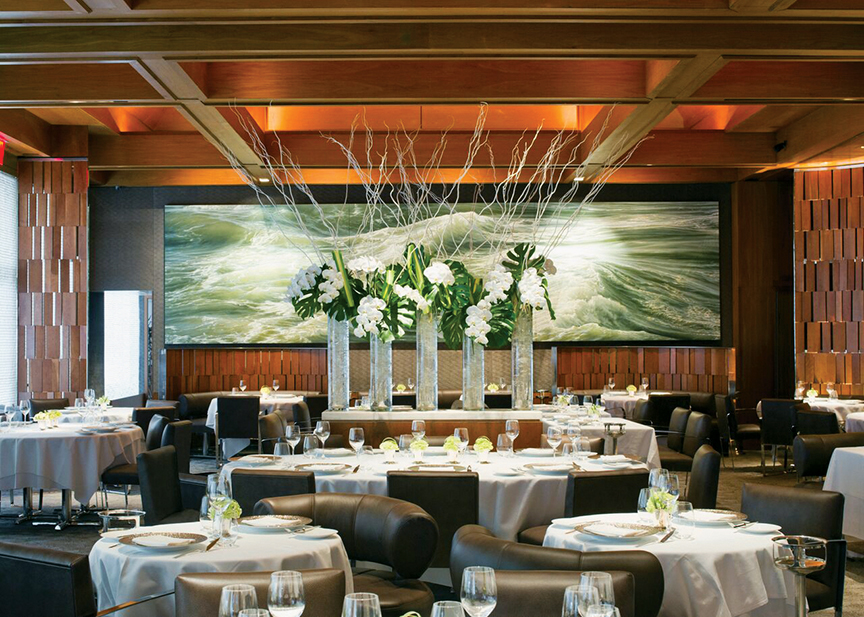
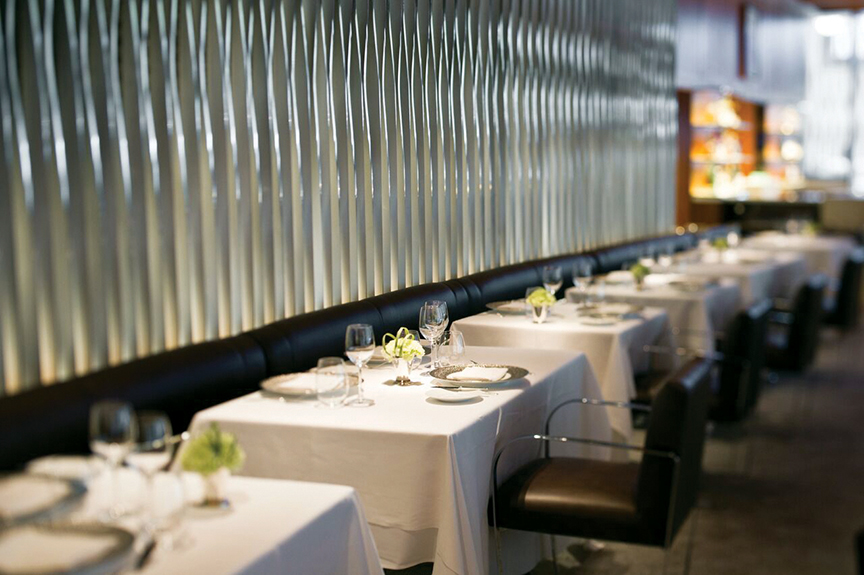
Photos courtesy of Le Bernadin
Overall, Americans are shunning haute cuisine, but for elite diners there remain plenty of opportunities for conspicuous consumption.
By Roger Grody
Generally, “fine dining” — typically evidenced by crisp white tablecloths, crystal stemware and formal service — is rapidly disappearing in America. However, for those restaurants that stubbornly adhere to tradition and insist on genuine luxury, the experience is elevated … along with the price.
Charlie Trotter, the renowned Chicago chef who died in his prime, insisted that fine dining actually represents good value, citing the superb ingredients and intensive labor (100 people from farmers to servers) that contribute to a world-class meal. Average Americans cannot afford mansions or yachts, but many can occasionally experience the world’s finest cuisine. The restaurants featured herein honor Trotter’s philosophy, with some pushing his principle to its limits.
Le Bernardin is one of New York’s temples of gastronomy, where chef/partner Éric Ripert has earned acclaim for fresh, seasonable seafood enhanced through sophisticated French technique. With options between $170 and $225 per person, the prix fixe menus at Le Bernardin are actually restrained for a Michelin three-star restaurant, but a couple can drop a bundle once caviar and wine are added.
“Luxurious service no longer equates to the stiff environment with formulaic interactions that was once popular,” reports Ripert, and while Le Bernardin has pioneered a more approachable experience, the chef/restaurateur still values tradition. “We continue to be a destination for special occasions, which is a large part of why we uphold some of our more classical dining requirements, such as gentleman wearing jackets,” he says. Allowing guests to visit the kitchen and take photographs with staff might not have been something his mentor Joël Robuchon would have encouraged decades ago, but Ripert views it as part of the evolution of fine dining.
While French cooking has the reputation for being the most expensive, it is Japanese cuisine — particularly the art of sushi — that is the priciest in America today. Discretely tucked into a diminutive space on Beverly Hills’ Rodeo Drive is Urasawa, whose entire seating is essentially comprised of just eight chairs at a sushi bar. There, for a flat fee of $425 per person (before tax, tip or a drop of sake), sushi chef Hiroyuki Urasawa personally pampers guests with an omakase (chef’s choice) meal in which extraordinary ingredients are matched by artistry on the plate.
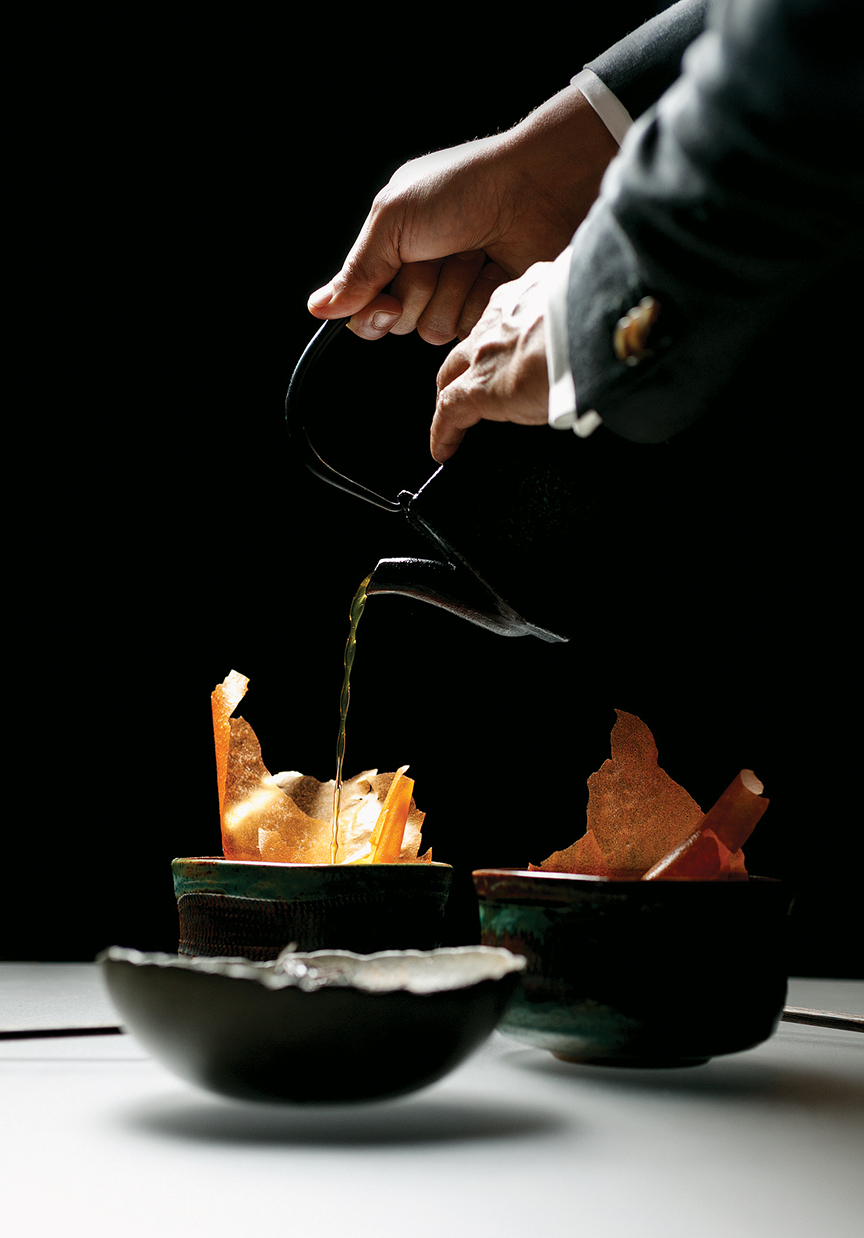

Photos by Allen Hemberger, interior by Matthew Gilson
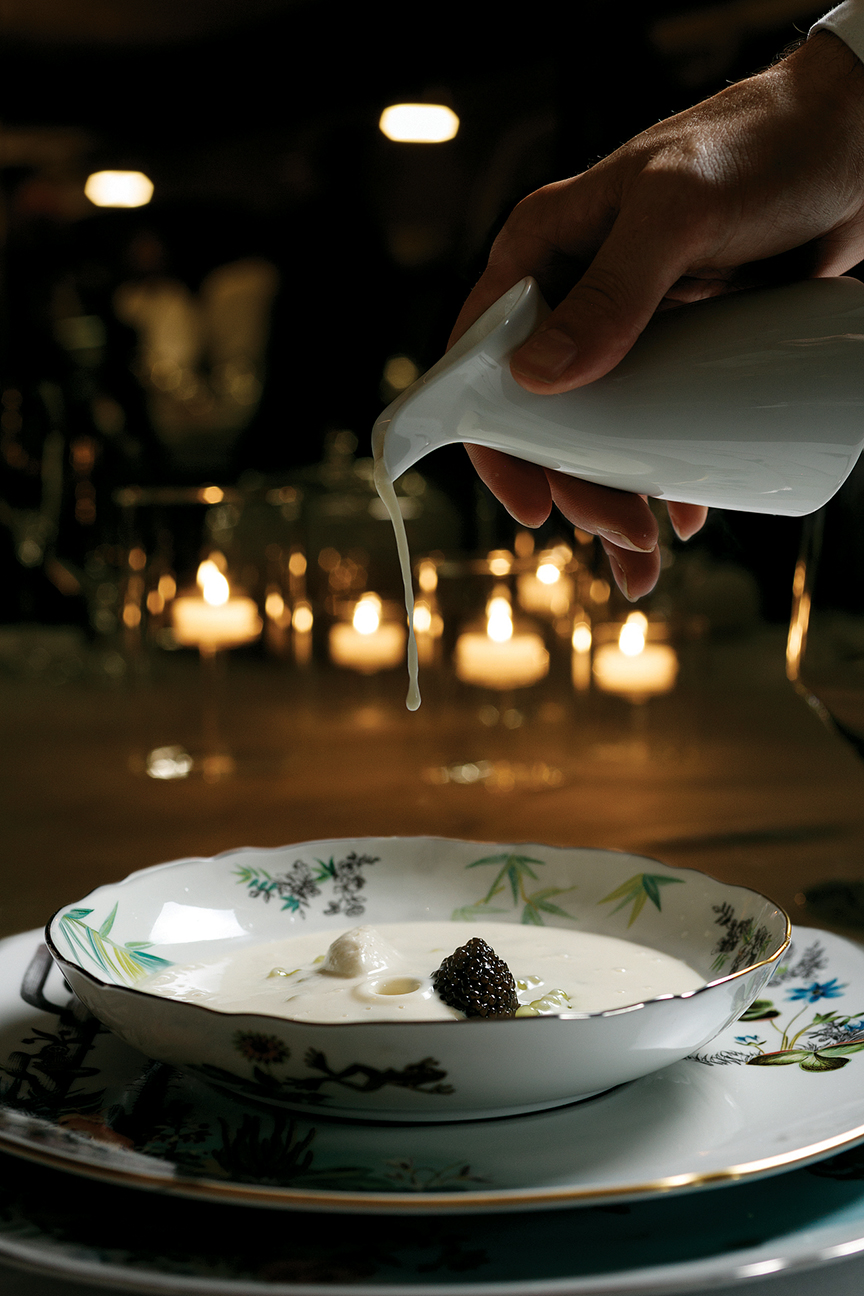

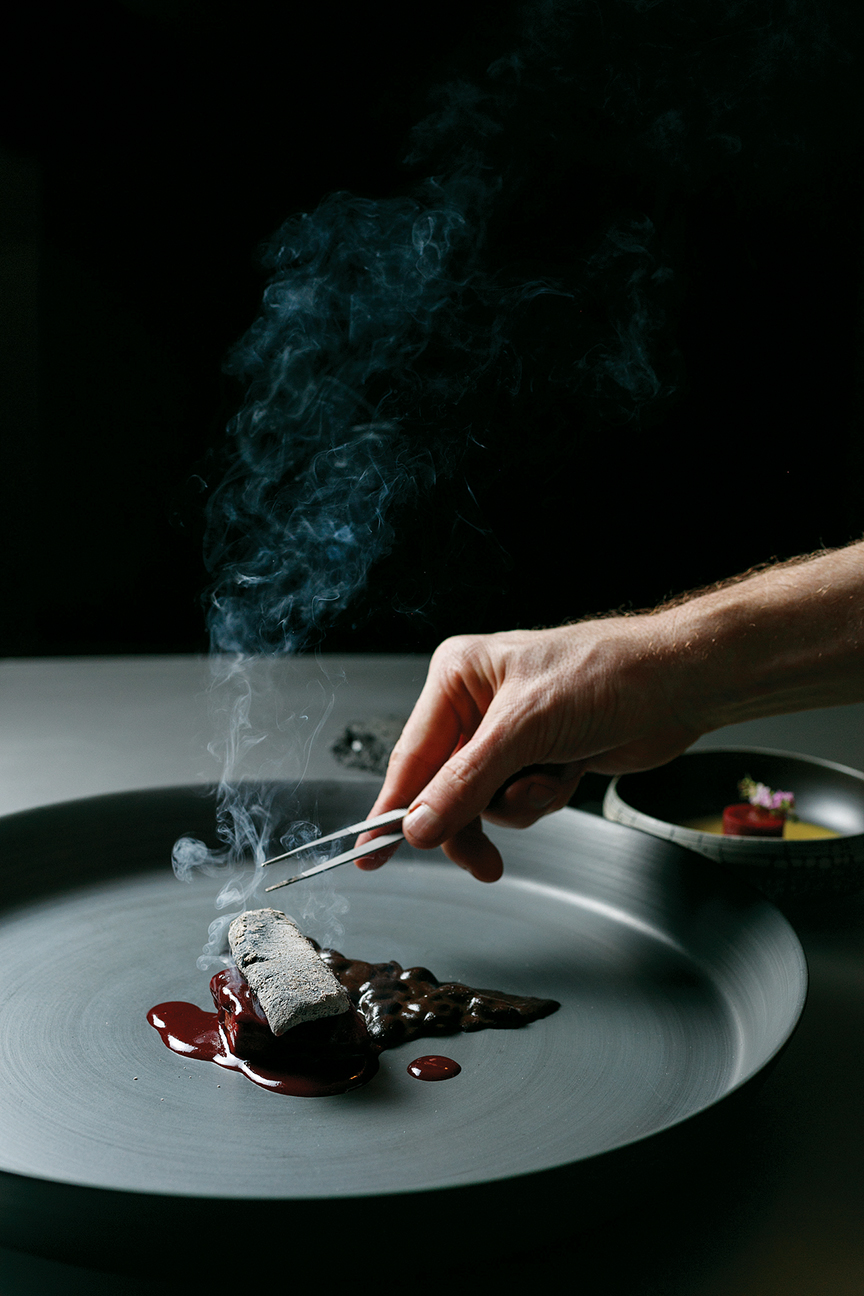
Urasawa-san is a protégé of sushi chef Masayoshi “Masa” Takayama, whose own restaurant previously occupied that same Beverly Hills space. When Takayama was lured to New York to open his 26-seat Masa at Time Warner Center, the prices went up and are now $595 per person, although gratuities are not accepted.
Masa’s sushi bar, a solid piece of hinoki (Japanese cypress), is sanded daily to create a luxurious tactile surface, while flowering branches of seasonal plants provide the only distraction from the master’s work behind the counter. A procession of glistening, edible jewels — the exquisite plating includes ample caviar, truffles and uni — comprise an unforgettable two dozen-course feast that most believe is worth the price.
Alinea, the renowned flagship of culinary innovator Grant Achatz, is sometimes mistakenly viewed as an elaborate stage for the chef/owner’s bag of molecular gastronomical tricks, but innovation alone does not earn three Michelin stars. While the interactivity and playfulness of the cuisine may turn off traditionalists who insist on the hushed formality of what typically passes for fine dining, the sophistication of Achatz’s ingredients, imagination and technique is undeniable. The price for this carefully choreographed presentation of culinary and performance art can reach $385 per person, prior to making a wine selection.
While acknowledging the “absurdity” of paying so much for a meal, Jeff Ruby, chief dining critic at Chicago magazine, insists the Alinea experience is a sound investment. “Someday, Alinea will be gone, and people will speak of it with awe, and its legend will grow,” he says. “Like people who brag that they saw Michael Jordan play in his prime, you can say you ate at Alinea. That is worth way more than $385 to me.”
Ruby believes even traditionalists can find pleasure with Achatz’s concept, as long as they go with an open mind. “People walk in with a chip on their shoulders and Alinea knocks the chip off and turns it into some kind of dehydrated truffle orb,” quips Ruby, insisting Achatz and his crew deliver on their promise night after night.
Located in a posh hotel 20 miles north of downtown San Diego is Addison, where 22-karat gold-trimmed doors open into a soaring foyer while four limestone fireplaces warm the classically inspired premises. In the kitchen, Executive Chef William Bradley prepares a contemporary French cuisine while $10,000-plus treasures are stocked in the wine cellar. Although the chef’s 10-course tasting menu is a relatively manageable $250, Addison recently hosted a Krug Champagne dinner that at $1,000 per head is extravagant by any standard.
“At Addison, every element is fine-tuned through the lens of creating the best and most memorable dining experience possible for our guests from the moment they walk through the door,” reports Bradley. Noting that many diners are celebrating special occasions or have traveled a great distance, he adds that small details (e.g. generously spaced tables, stools for ladies’ purses) are the foundation of the guest experience.
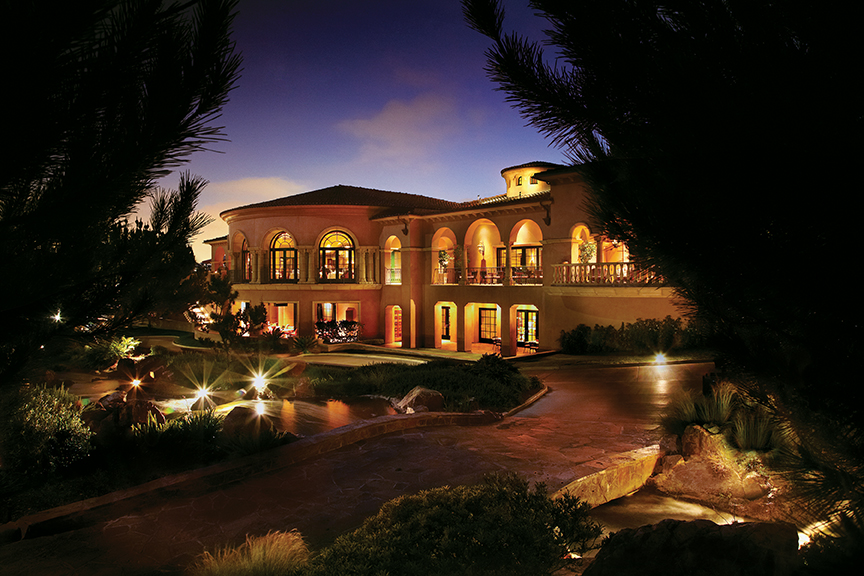
Photos courtesy of Tory Kooyman and Jakob N. Layman

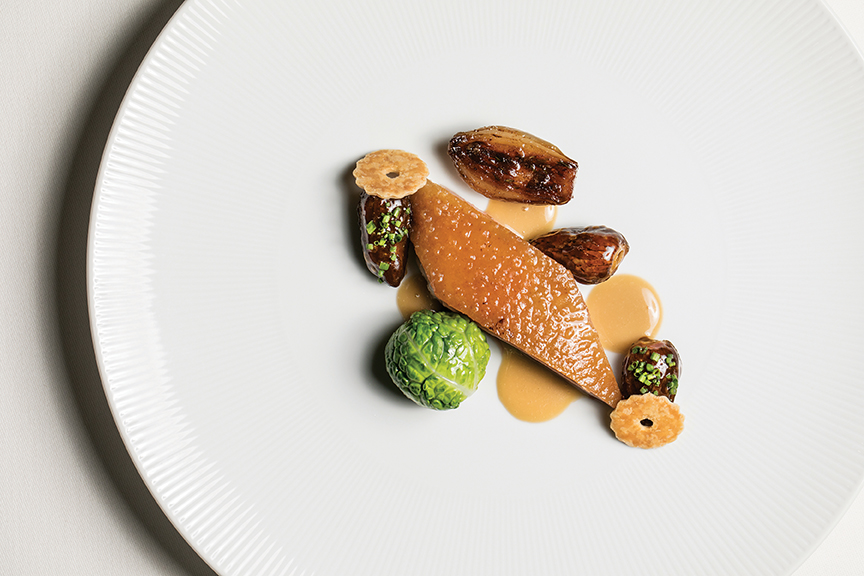
“Hospitality is timeless, as is the desire to be transported,” says Bradley, noting that the dining experience at Addison — it is tucked away in the hills above Del Mar — echoes its physical separation from metropolitan San Diego or L.A. “In an era where we’re so connected to technology, it’s more important than ever to maintain fine dining traditions that separate our guests from the stress of their daily routines,” suggests the chef.
Addison’s bar is currently dispensing a $250 cocktail called the Corpse Reviver XIII, a reimagination of a classic libation with roots in the 19th century. This gold dust-embellished version contains Adrien Camut Rareté (a Calvados so rare only 10 bottles are allocated to the U.S. annually) and 40-year-aged Rémy Martin Louis XIII Cognac. With its price equivalent to the tasting menu, this is clearly an indulgence worth lingering over.
In San Francisco, Saison ranks as the most exclusive and expensive restaurant in town, where exquisitely presented contemporary American fare is served in a space where the boundaries between dining room and kitchen are all but erased. A procession of nearly 20 small courses, which changes daily and can be tailored to the preferences of individual diners, carries a tariff of $398 —before even exploring Saison’s world-class wine list.
In Las Vegas, where winners and losers alike are as predisposed to consume opulent cuisine as they are to purchase Louis Vuitton bags, every major hotel has at least one ultra-high-end dining room. At Caesar’s Palace it is the eponymous restaurant of Guy Savoy, one of Paris’ Michelin three-star stalwarts, where the “Prestige Tasting Menu” runs $385 per person and premium wine pairings add another $375.
At Twist, a celebrated dining venue at the Mandarin Oriental Las Vegas, Chef Pierre Gagnaire (another giant of the Parisian dining scene) presents what may be the luckiest menu on the city’s legendary Strip. A seven-course meal is paired with seven fine wines to comprise a memorable gastronomic experience, and hopefully its $777 per person investment can be recouped with some additional sevens in a nearby casino.
At the Mandalay Bay’s Fleur in Las Vegas, even the ultimate comfort food can inflict extensive damage to one’s budget. There, chef/owner Hubert Keller applies the city’s legendary glam to the humble hamburger, layering foie gras and truffles over a wagyu beef patty. It arrives with a bottle of 1995 Château Pétrus, one of the world’s most treasured wines, followed by a $5,000 tab.
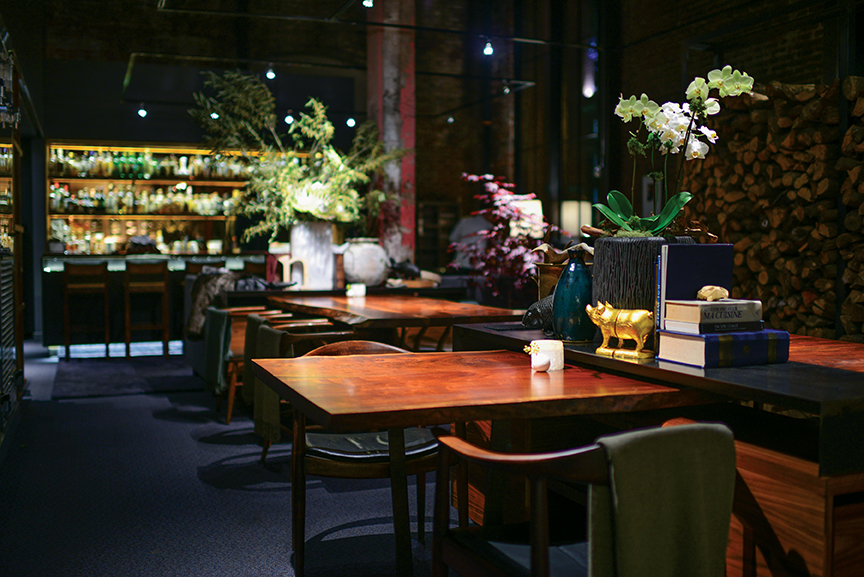
Photos by Bonjwing Lee
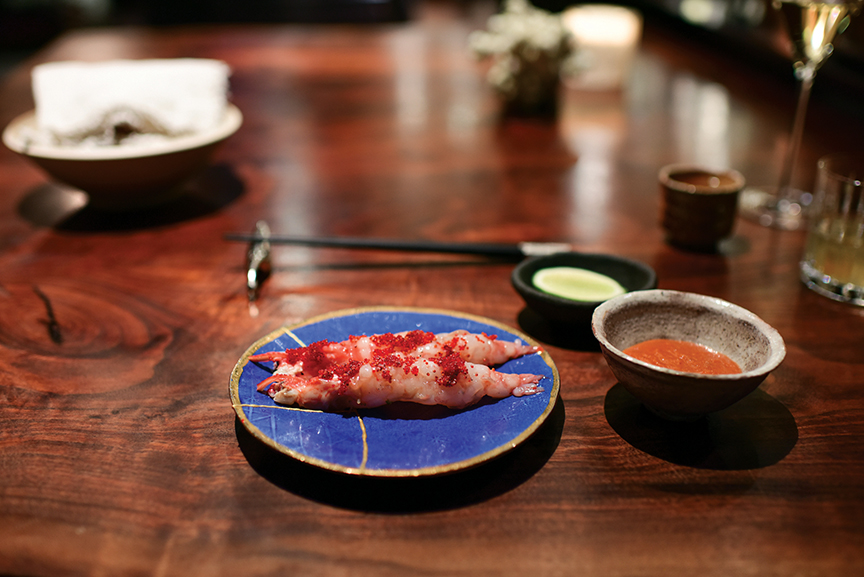
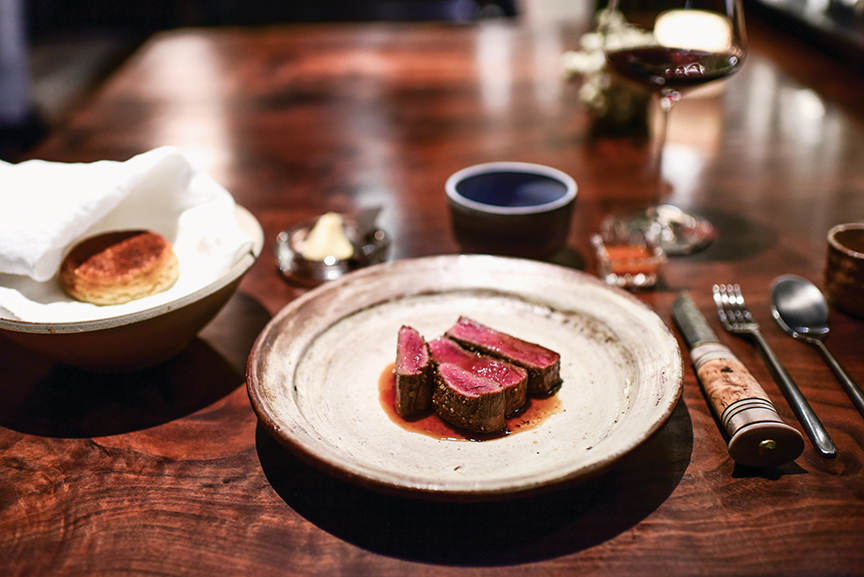
Addison • San Diego • www.addisondelmar.com
Alinea • Chicago • www.alinearestaurant.com
Fleur by Hubert Keller • Las Vegas • www.hubertkeller.com
Restaurant Guy Savoy • Las Vegas • www.caesars.com
Le Bernardin • New York • www.le-bernardin.com
Masa • New York • www.masanyc.com
Saison • San Francisco • www.saisonsf.com
Twist • Las Vegas • www.mandarinoriental.com/las-vegas
Urasawa • Beverly Hills • http://urasawa.cafe-inspector.com
A glimpse at some of the finest Presidential Suites in the world reveals that some of the amenities in just one of them include: Cantilevered glass balconies, a breathtaking library with a 26-foot cathedral ceiling, a Bösendorfer baby grand piano, lacquered walls with inlaid mother-of-pearl detailing, world-class art and a master bath clad in rare Chinese onyx.
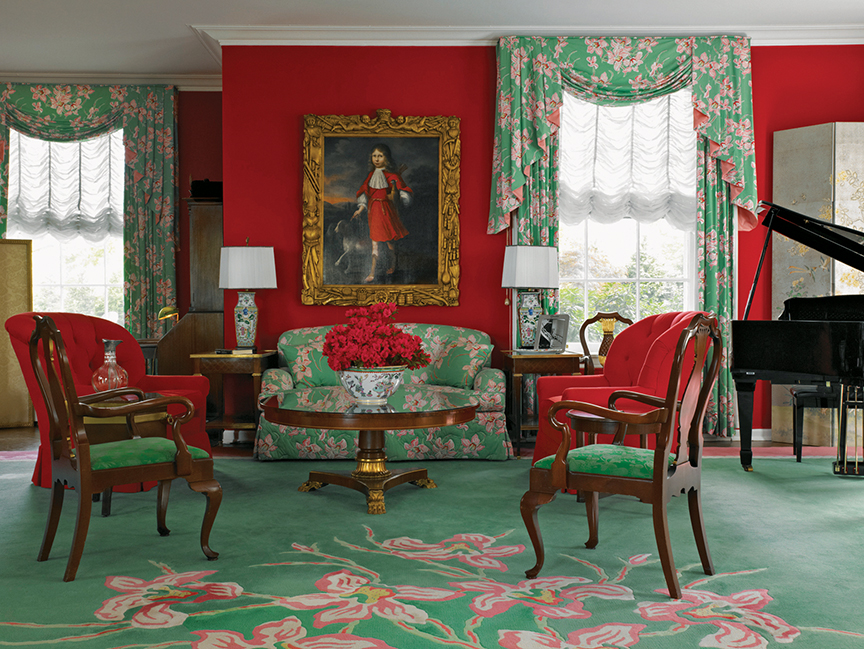
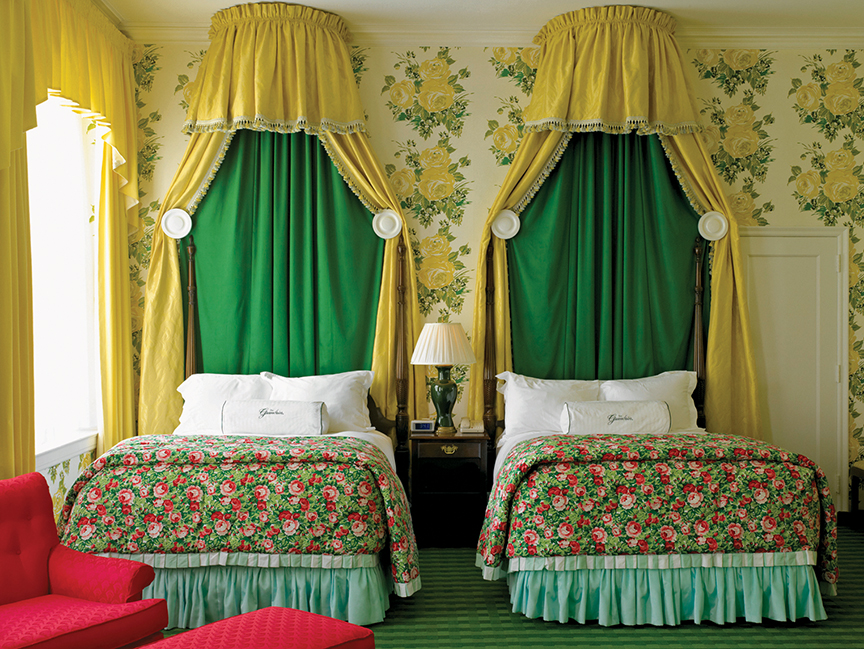
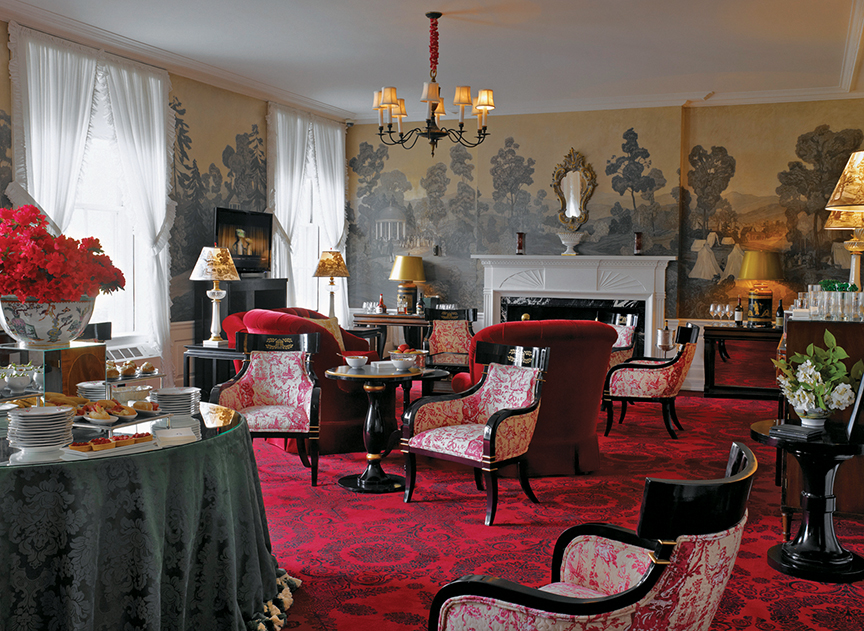
In most hotels, the “Presidential Suite” will never host a U.S. president, but its very presence suggests a property possesses the requisite luxury for the most exclusive clientele. It is an opportunity for interior designers and staff to pull out all the stops to create the ultimate accommodations for heads of state, A-List celebrities or billionaire entrepreneurs.
Since James Monroe held the office, U.S. presidents have gravitated to The Greenbrier, the stately West Virginia resort 250 miles southwest of Washington, D.C., now a short flight aboard Air Force One. Surrounded by 11,000 rolling, wooded acres, the retreat has the serenity of Camp David but with world-class golf and cuisine. After a visit from President Eisenhower in 1956, a secret Cold War bunker was constructed at The Greenbrier for the relocation of Congress in the event of a nuclear attack.
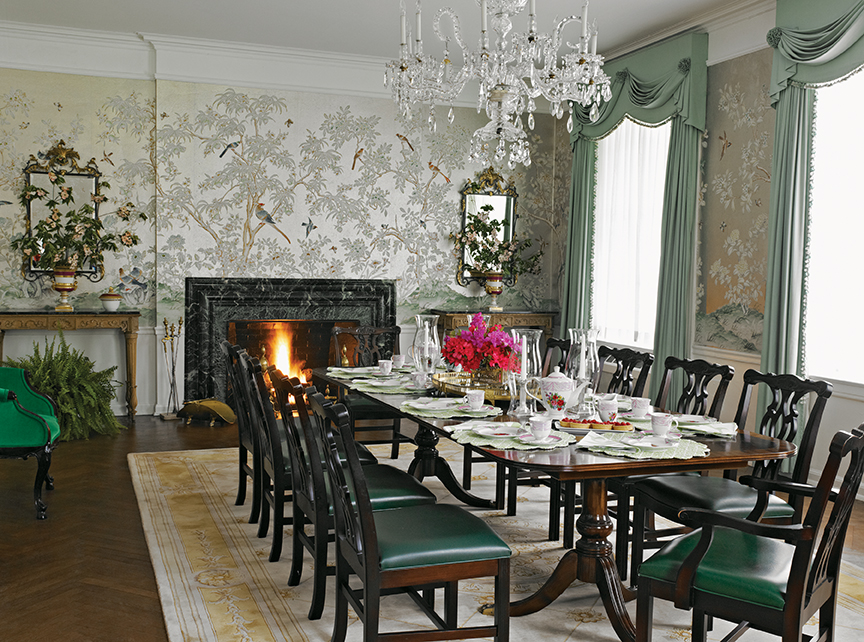
Photos courtesy of The Greenbriar
The Presidential Suite is located in a wing called The Windsor Club at The Greenbrier, and currently commands $25,000 per night. A sweeping staircase leads from the entertainment areas on the ground floor to seven bedrooms (all with en suite bathrooms) above. An additional 18 bedrooms for guests or staff are available upon request. Originally decorated by legendary interior designer Dorothy Draper, the Presidential Suite still features her signature style of American Baroque furniture and vibrant hand-painted wallpaper.
According to Dr. Robert S. Conte, the resort’s official historian and author of The History of The Greenbrier—America’s Resort, the suite was created in 1947 when the property was converted back to a hotel after serving as a U.S. Army hospital during World War II. “It’s at the end of a long corridor, which provides a sense of privacy and has a dedicated concierge,” reports Conte.
Of the 27 presidents who have stayed at The Greenbrier, only Eisenhower actually slept in the Presidential Suite, as other suites offer more manageable spaces. But its occupants have included Indian Prime Minister Nehru, as well as the Duke and Duchess of Windsor. The 5,500-squre-foot suite is ideal for corporate entertaining, and one family has made a tradition of booking it every Christmas for 25 years.
On the 51st floor of the I.M. Pei-designed Four Seasons Hotel in Midtown Manhattan are a pair of beautifully appointed 1,350-square-foot “Presidential Suites” with stunning views of the New York skyline and neighboring Central Park. But heads of state, royalty or big-name celebrities may prefer to ascend to the Ty Warner Penthouse, a 4,300-square-foot suite with 360-degree views and extraordinary appointments. The Four Seasons reports the showcase suite, a collaboration of Pei, hotel owner Ty Warner and iconoclastic architect/interior designer Peter Marino, is the product of a $50 million investment.
The Ty Warner Penthouse features the four highest cantilevered glass balconies in the world, perched over one of New York’s most prestigious and strategic addresses. A breathtaking library offers a 26-foot cathedral ceiling, floor-to-ceiling bronze bookcases from French sculptor Claude Lalanne and a Bösendorfer baby grand piano. Lacquered walls with inlaid mother-of-pearl detailing, world-class art and a master bath clad in rare Chinese onyx contribute to the architectural drama, while service perks include a 24-hour dedicated guest manager and Rolls Royce with driver at the ready. The nightly rate for this opulence is about $60,000, arguably a bit pricy for a public servant.
The Presidential Suite is located in a wing called The Windsor Club at The Greenbrier, and currently commands $25,000 per night. A sweeping staircase leads from the entertainment areas on the ground floor to seven bedrooms (all with en suite bathrooms) above. An additional 18 bedrooms for guests or staff are available upon request. Originally decorated by legendary interior designer Dorothy Draper, the Presidential Suite still features her signature style of American Baroque furniture and vibrant hand-painted wallpaper.
According to Dr. Robert S. Conte, the resort’s official historian and author of The History of The Greenbrier—America’s Resort, the suite was created in 1947 when the property was converted back to a hotel after serving as a U.S. Army hospital during World War II. “It’s at the end of a long corridor, which provides a sense of privacy and has a dedicated concierge,” reports Conte.
Of the 27 presidents who have stayed at The Greenbrier, only Eisenhower actually slept in the Presidential Suite, as other suites offer more manageable spaces. But its occupants have included Indian Prime Minister Nehru, as well as the Duke and Duchess of Windsor. The 5,500-squre-foot suite is ideal for corporate entertaining, and one family has made a tradition of booking it every Christmas for 25 years.
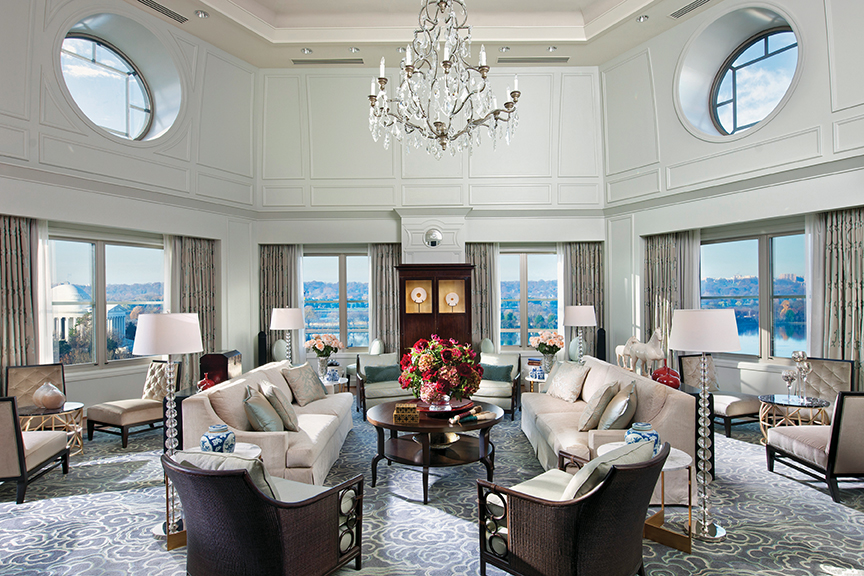
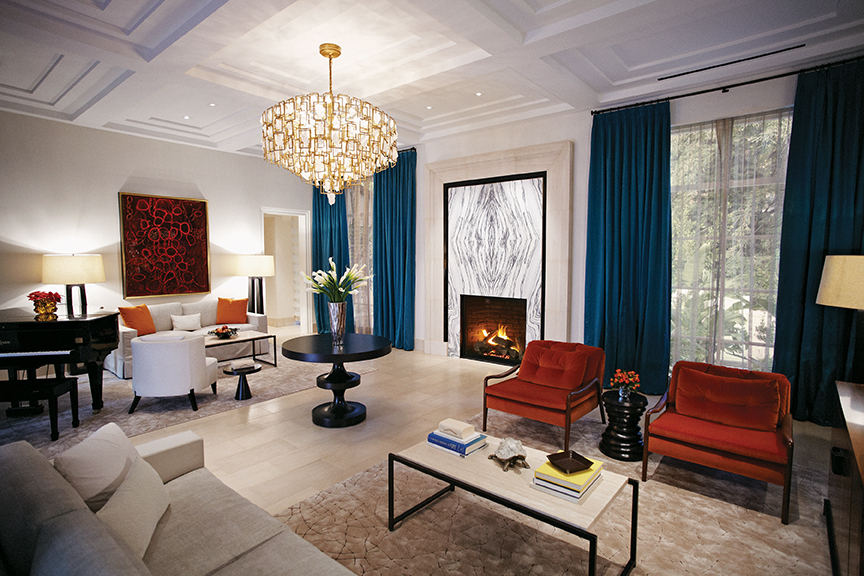
Photos courtesy of Caesar’s Hotel and Bel Air Hotel
On the 51st floor of the I.M. Pei-designed Four Seasons Hotel in Midtown Manhattan are a pair of beautifully appointed 1,350-square-foot “Presidential Suites” with stunning views of the New York skyline and neighboring Central Park. But heads of state, royalty or big-name celebrities may prefer to ascend to the Ty Warner Penthouse, a 4,300-square-foot suite with 360-degree views and extraordinary appointments. The Four Seasons reports the showcase suite, a collaboration of Pei, hotel owner Ty Warner and iconoclastic architect/interior designer Peter Marino, is the product of a $50 million investment.
The Ty Warner Penthouse features the four highest cantilevered glass balconies in the world, perched over one of New York’s most prestigious and strategic addresses. A breathtaking library offers a 26-foot cathedral ceiling, floor-to-ceiling bronze bookcases from French sculptor Claude Lalanne and a Bösendorfer baby grand piano. Lacquered walls with inlaid mother-of-pearl detailing, world-class art and a master bath clad in rare Chinese onyx contribute to the architectural drama, while service perks include a 24-hour dedicated guest manager and Rolls Royce with driver at the ready. The nightly rate for this opulence is about $60,000, arguably a bit pricy for a public servant.
On the other coast, a favorite spot of the rich and famous is the Hotel Bel-Air, whose attraction is not only its prestige but its seclusion. Buffered by 12 acres of landscaped gardens with an idyllic swan pond, the hotel’s Presidential Suite is understatedly elegant, with arched floor-to-ceiling windows, chandeliers hanging from coffered ceilings and luxurious limestone floors more suggestive of a grand residence than a hotel. A stunning Bianco Ondulare marble-clad fireplace and grand piano occupy the living room, while gracious dining for 10 is accommodated in a room with silver-laced, hand-painted walls. Guests pass through French doors into a private courtyard with its own swimming pool, reflective of the signature serenity of the entire property.
The Bel-Air’s versatile 6,775-square-foot Presidential Suite, for which the nightly rate starts at $15,000, is accessed through a private entrance ensuring privacy and providing a more residential feel. “The suite is situated in a compound layout, so anyone traveling with security or an entourage can have connecting suites or rooms,” explains Kayal Moore, assistant director of rooms at the Bel-Air. Addressing the enhanced service that complements the environment, he says, “We truly offer a unique and tailored stay for each guest.”
Everything on the Las Vegas Strip, where there is a different standard for conspicuous consumption, is over-the-top, so it should come as no surprise that the premier accommodations at the city’s iconic hotels are truly spectacular. Many decadent suites are set aside for high rollers at Caesar’s Palace (none officially titled “Presidential Suite”), some whose pink onyx bathtubs with 24-karat gold fixtures are better suited for pleasure than official business.
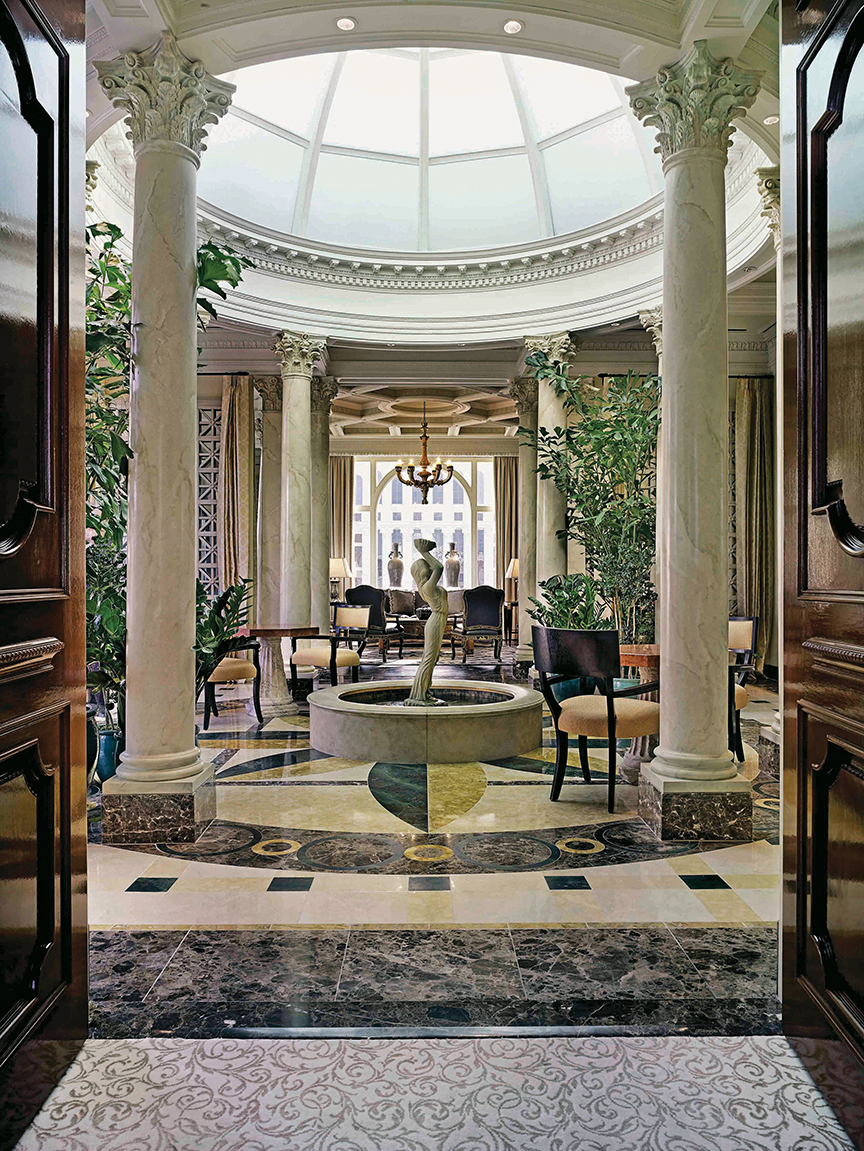
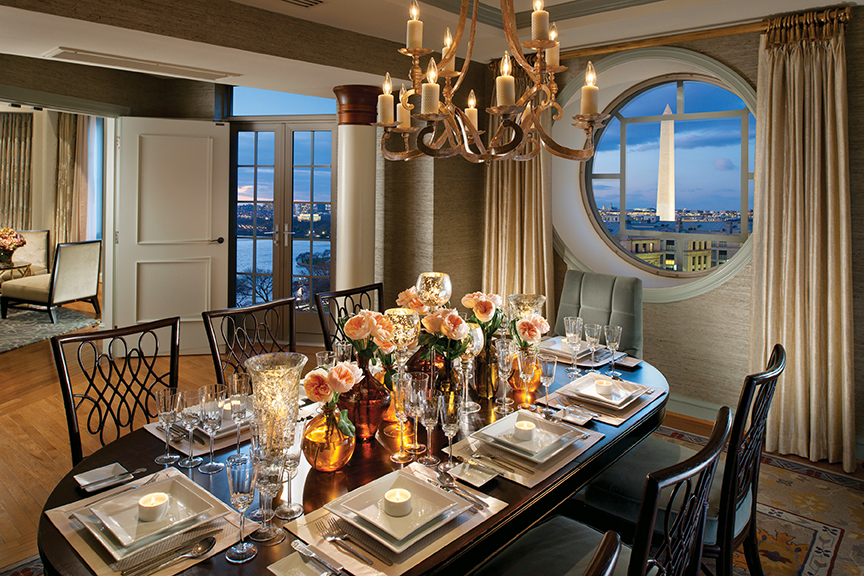
Photos courtesy of Caesar’s Palace
When President Obama and family stayed at Caesar’s, they occupied the Cleopatra Villa and the adjoining Mark Antony Villa, totaling 20,000 square feet of lavish, marble-clad space with a glass-covered atrium, six bedrooms and an oversized outdoor spa. “Now that I’m president, they upgraded me,” Obama reportedly joked during his 2009 stay, acknowledging the over-the-top accommodations. The two combined suites, priced from $33,000 per night and favored by platinum record pop stars, royal families and tech tycoons — are accessed by secure private elevator and served by a dedicated butler 24 hours a day.
The Venetian, Las Vegas’ luxury Italianate hotel, offers not one but four Presidential Suites that combine understated elegance with a little glitz, consistent with a property that values artistic expression. Each suite’s 5,200 square feet of living space includes grand marble foyers, lavish dining rooms and a pair of bedrooms with elegant amenities. Naturally, the occupants have access to any of the hotel’s acclaimed chefs and can relax over a game of billiards in a stately game room. Hotel representatives report the Chairman Suites at The Venetian’s adjoining sister property, The Palazzo, are larger, flashier and even more befitting the highest of rollers.
Clearly, Washington, D.C. knows how to accommodate diplomats, prime ministers and sultans, with suites pre-approved by the Secret Service. The Presidential Suite at the Mandarin Oriental, which has nightly rates starting at $15,000, offers spectacular views of the nation’s capital and traditional yet exquisite décor. A hexagonal living room with vaulted ceiling and crystal chandelier adds to the ease of entertaining in this 3,500-square-foot suite, where stunning spa-like contemporary bathrooms — the master features a two-person glass shower — adjoin spacious sleeping quarters.
Hotel manager Marie-Elise Lallemand insists the Mandarin Oriental’s Presidential Suite is the only one in the District with genuinely monumental views, noting its 180-degree panorama encompasses many of the capital city’s most recognizable landmarks. In fact, a circular window in the 10-seat dining room perfectly frames a postcard-worthy vista of the Washington Monument. “With two bedrooms, two-and-a-half baths, dining room with chef’s prep area, living room, office, sitting room, and grand foyer, our Presidential Suite is truly unique,” says Lallemand, who maintains the level of service is commensurate with the presidential premises.
Sweet Suites
Hotel Bel-Air • Los Angeles • www.dorchestercollection.com
Caesar’s Palace • Las Vegas • www.caesars.com
Four Seasons • New York • www.fourseasons.com
The Greenbrier • Sulphur Springs • West Virginia • www.greenbrier.com
Mandarin Oriental • Washington, D.C. • www.mandarinoriental.com
The Palazzo • Las Vegas • www.palazzo.com
The Venetian • Las Vegas • www.venetian.com
Greystone Development, a New York-based real estate development company, has commenced leasing at No. 223, located in Park Slope, Brooklyn, with leasing and marketing handled by MNS.
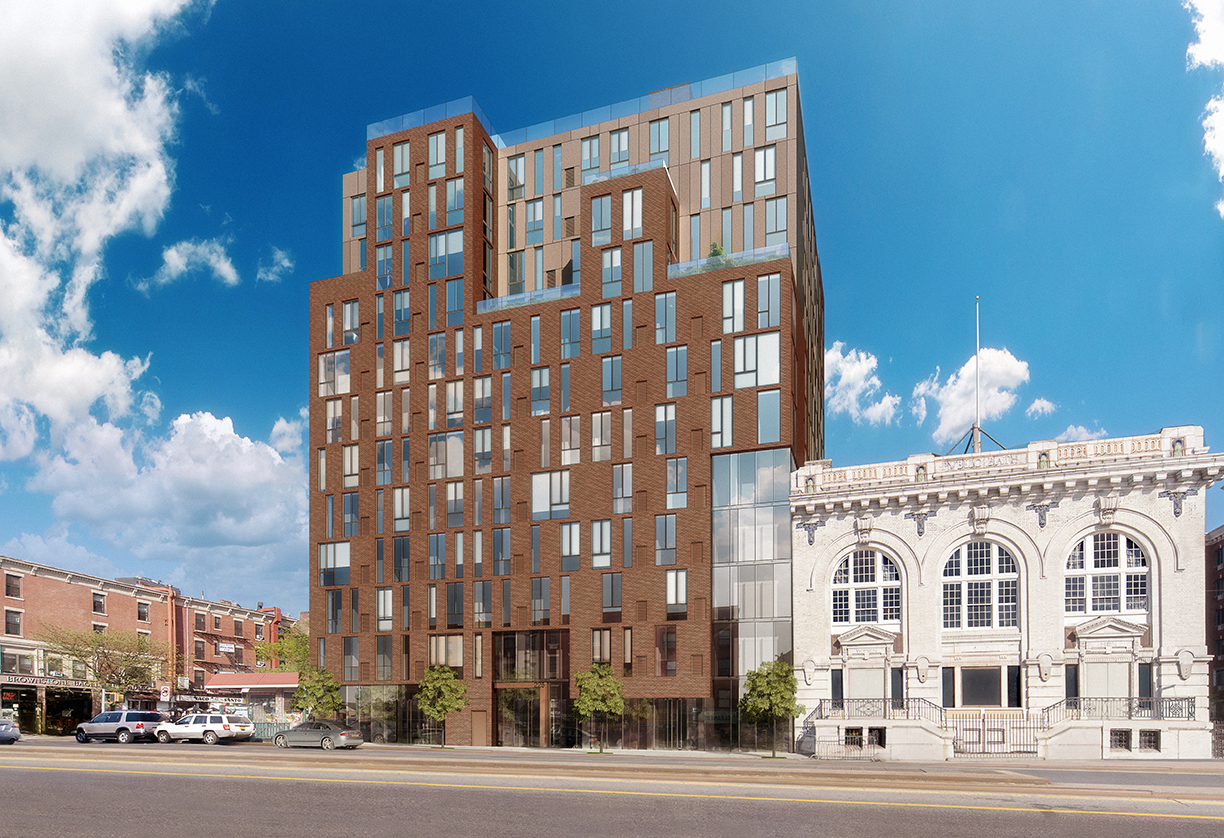
Situated near the Union Street MTA station, above Starbucks and next door to Blink fitness, this modern, 13-story building adds 63 meticulously designed rental units, from studios to two bedrooms, to this vibrant neighborhood.
Daniel Goldner Architects, an award-winning firm based in Chelsea, New York, envisioned this truly unique property, one that celebrates the existing red brick architecture in the neighborhood by incorporating the material into a contemporary context. This same consideration to detail is further demonstrated within the property.
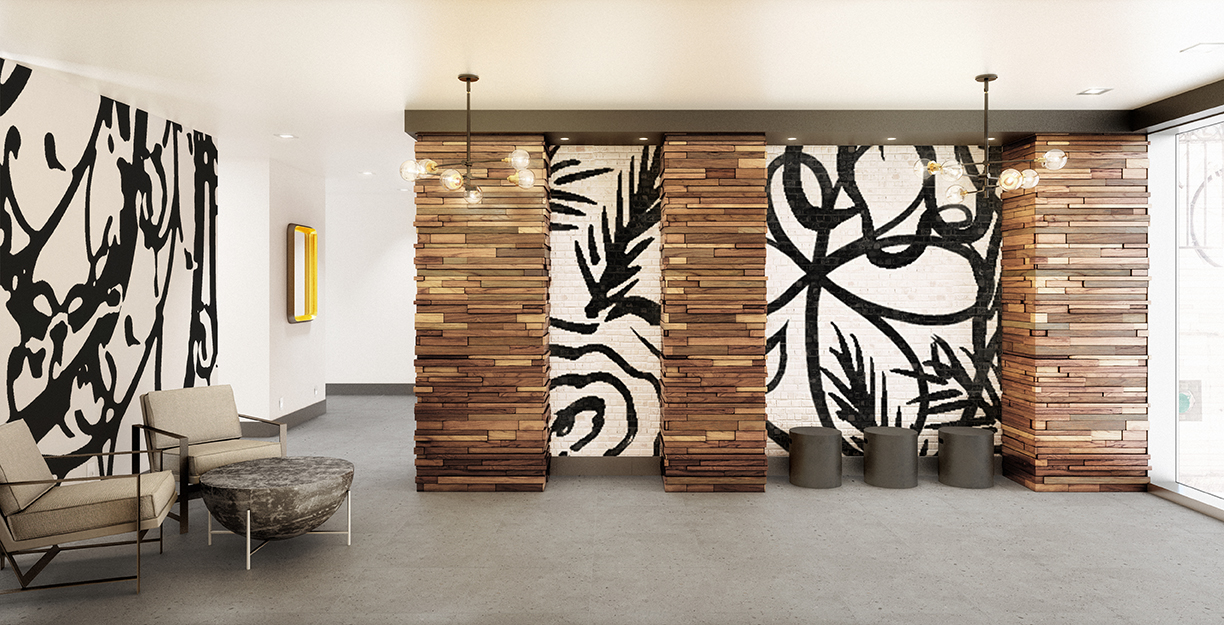
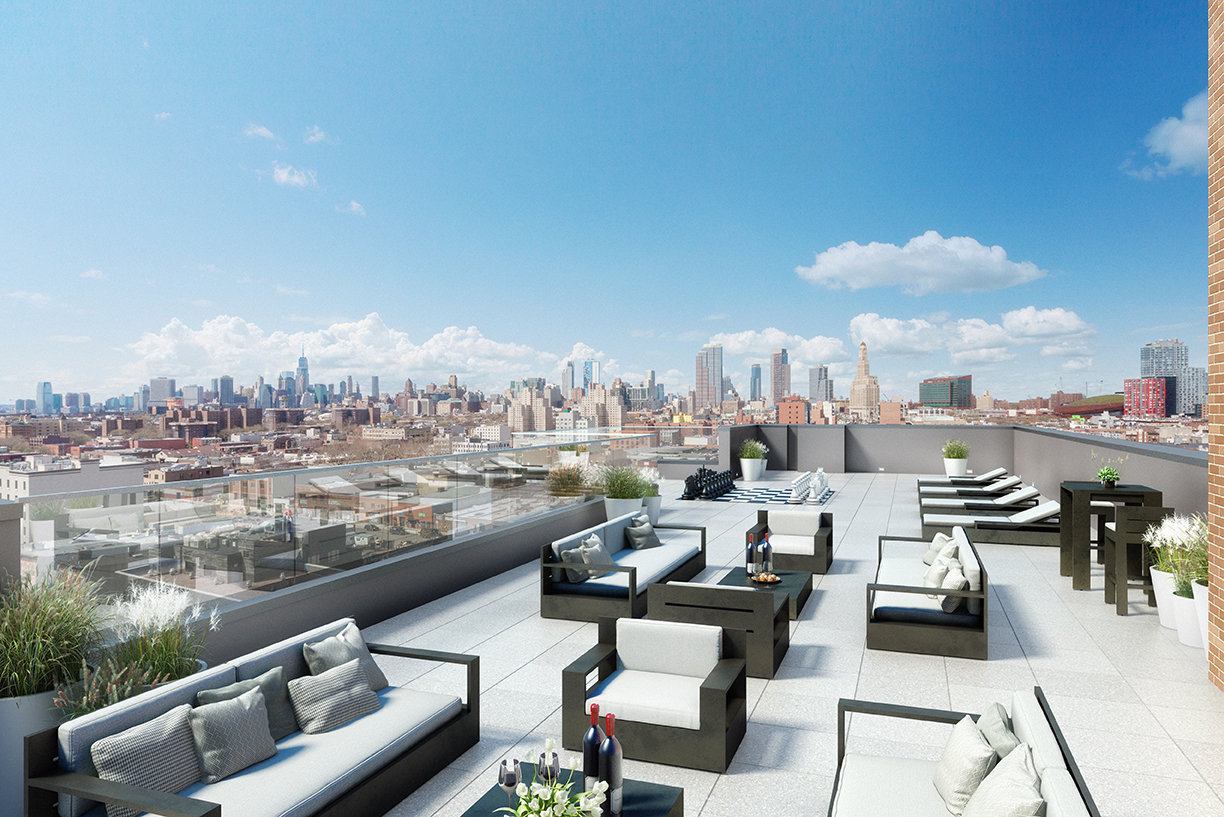
The layouts are carefully crafted to optimize light and air. The upper levels of the building are partially set back to create terraces and dual exposures in the living rooms and master bedrooms and introduce a seamless transition between the interior and exterior. The well-planned layouts also maximize usable square footage, allowing for the inclusion of in-home washers and dryers and ample storage including walk-in closets in most units. With an abundance of building amenities, residents may find themselves not wanting to leave home. Building features include: virtual doorman, part-time attended lobby, a double-height resident’s lounge with a designated chef’s kitchen, landscaped roof deck, and bicycle storage.
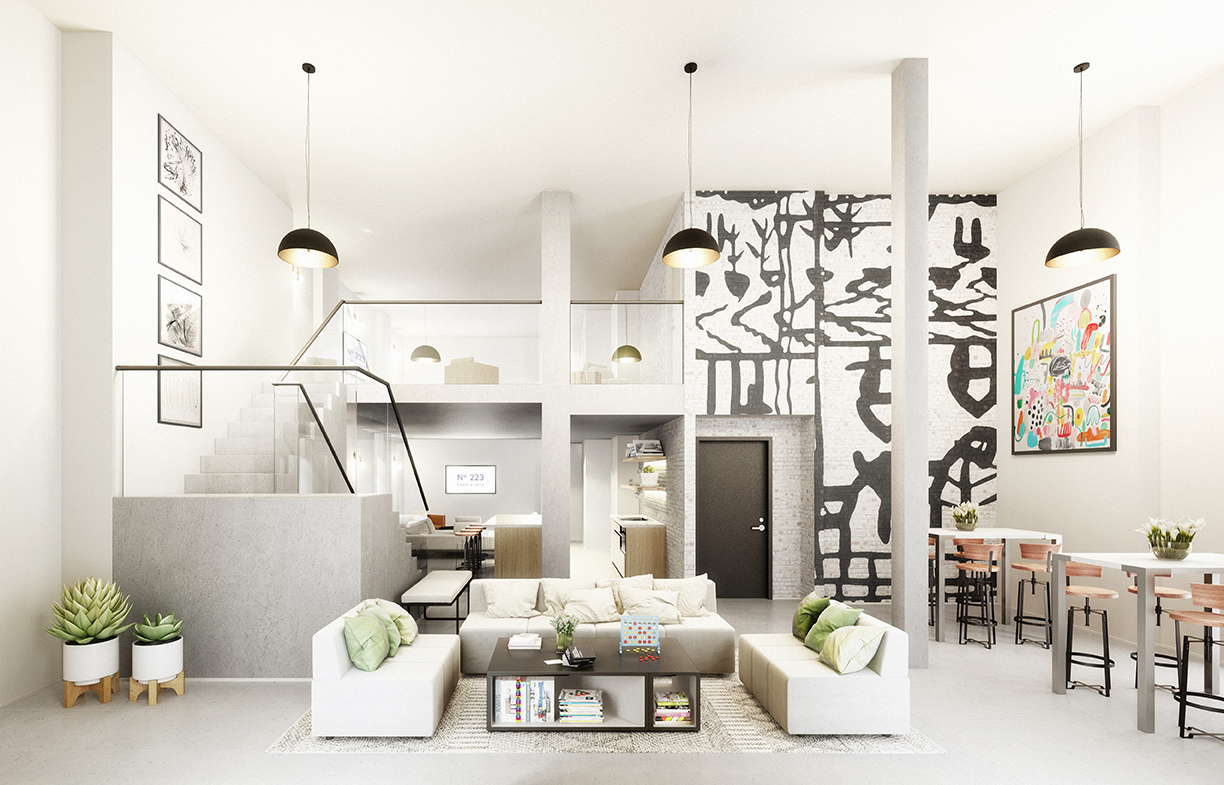
“This project has been an incredibly fulfilling process from the start,” said Thomas Ryan, Head of Greystone Development. “Our goal was to give this community a residential development that complements the adjacent landmark and contributes to this area’s vibrancy and activity. We are thrilled to see our vision come to fruition.”
Residents of No. 223 will enjoy, on average, 900 square feet in each unit, and approximate rents starting at net effective $2,315. No.223 is centrally located by many popular restaurants and businesses including Whole Foods, Royal Palms Shuffleboard Club, Brooklyn Boulders, Pig Beach, Blink Fitness, Dinosaur BBQ, and 5th Avenue boutiques.
Photos courtesy of Paperfarm
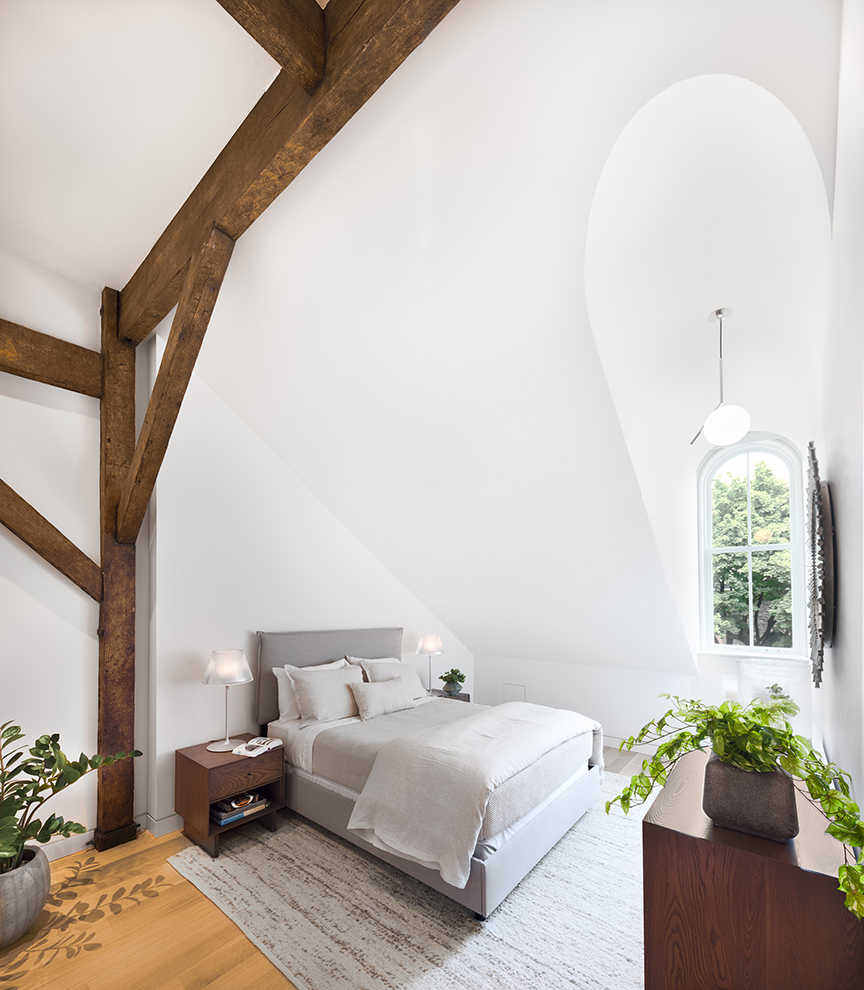
Residences at Prince Street. Photo courtesy Aaron Thompson.
Outfitting homes with an artistic ceiling creates a complete, dynamic space, often tying assorted aspects of home design together, from art to functioning space. In these examples, designers inspired to use interesting techniques have created complex designs that demand people to look up.
Gallery-Style Spaces
The character of a home is often shaped by the items inside it, including art or artistic detailing. Helping to define a home’s character, high ceilings within the home allow ample wall space for art lovers to adorn their walls with prized masterpieces. One example is seen in this Artefacto-designed residence in Bal Harbour, Florida, which boasts 10-foot-plus ceilings with customized panel backlights and recessed lights. The Oceana Bal Harbour unit also features floor-to-ceiling windows framing the breathtaking ocean and Intracoastal views.
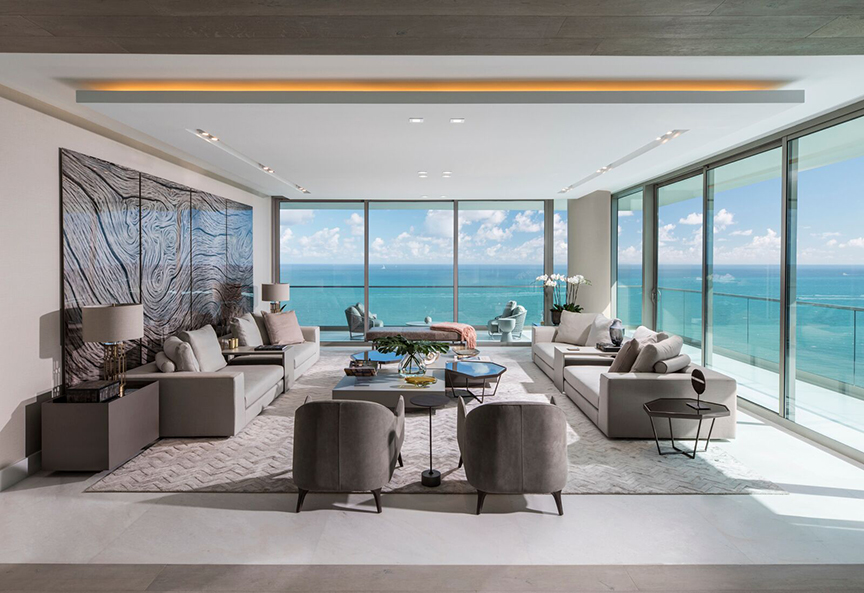
Photo courtesy Barry Grossman.
Embracing the Outdoors
A space can evoke different feelings depending on the environment, both inside and out. To embrace the elements, some spaces utilize the outdoors by bringing them in. Miami’s Brickell City Centre boasts a $30 million climate ribbon, a steel-and-glass elevated trellis that hovers over the retail center. An achievement in artistry and first of its kind, guests and residents of Reach and Rise can gaze at the sculptural element, as it protects them from inclement weather, captures sea breezes to regulate air flow and temperature, collects rainwater for reuse and allows them to enjoy natural light in an open-air environment.
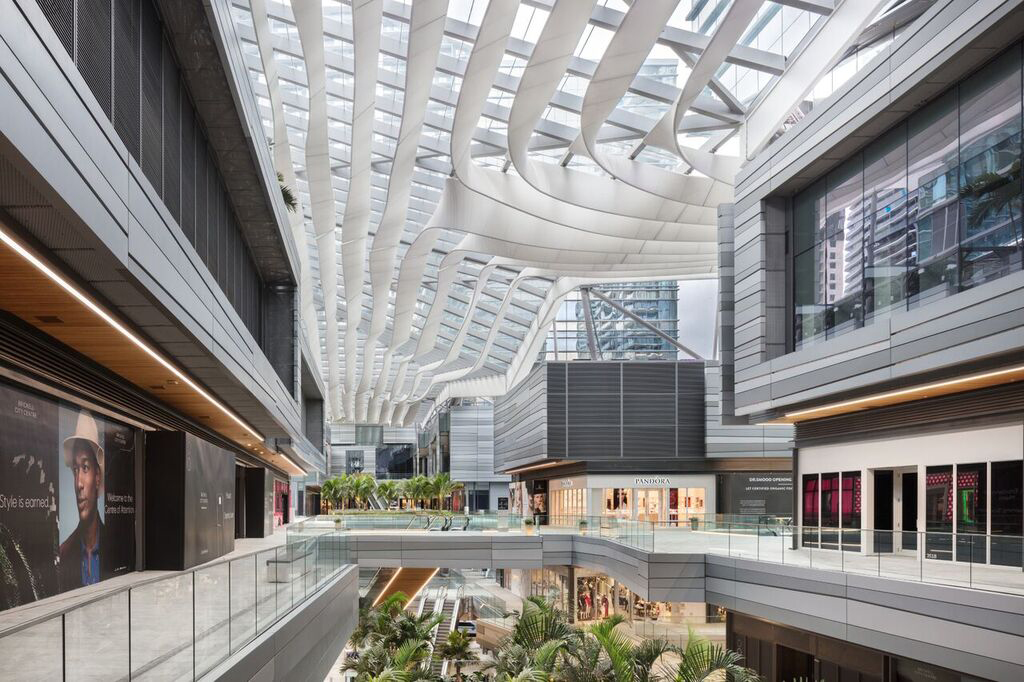
Photo courtesy Brickell City Center.
Smiling at the Past
Historical architecture is highly appreciated in the design industry, as it creates a traditional atmosphere for designers to either enhance or refresh with modern additions. These traditional styles of architecture extend into the home, seen through classic ceilings that add a unique element to the space. Residences at 62-66 North Third in North Williamsburg, New York, feature exposed, high concrete ceilings as a nod to the neighborhood’s industrial past. The residences embody a sense of character, design, and detail that combines modern and traditional Williamsburg in these expansive homes.
Another example with an authentic ceiling design is in this top-floor townhouse at the Residences at Prince Street, formerly part of St. Patrick’s Old Cathedral. The gabled ceilings with exposed wood beams reflect an authentically of the period; existing moldings and details were replicated throughout to create a top-floor living area with skylights and a cozy feel.
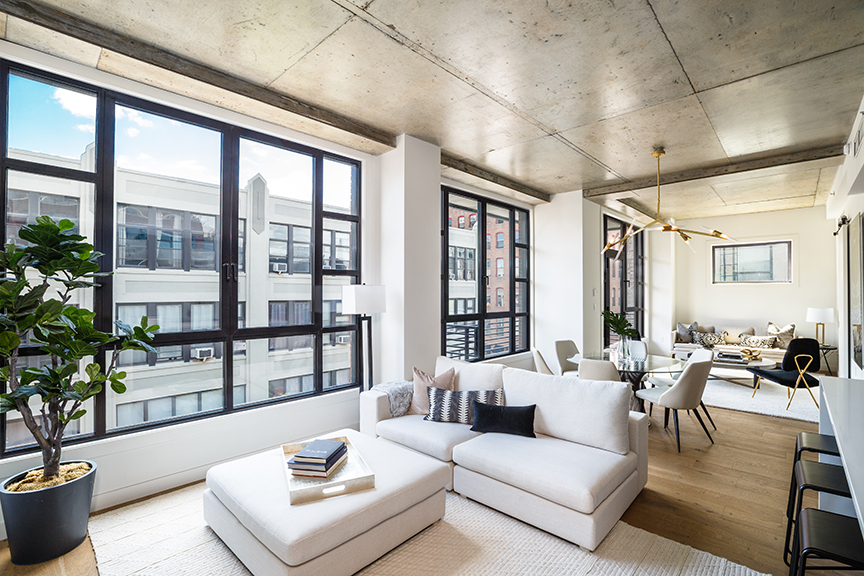
Photo courtesy MNS.
From healthy food and exercise to spa treatments and spiritual guidance, wellness tourism is putting health and well-being at the center of travel.
By Alyssa Gautieri
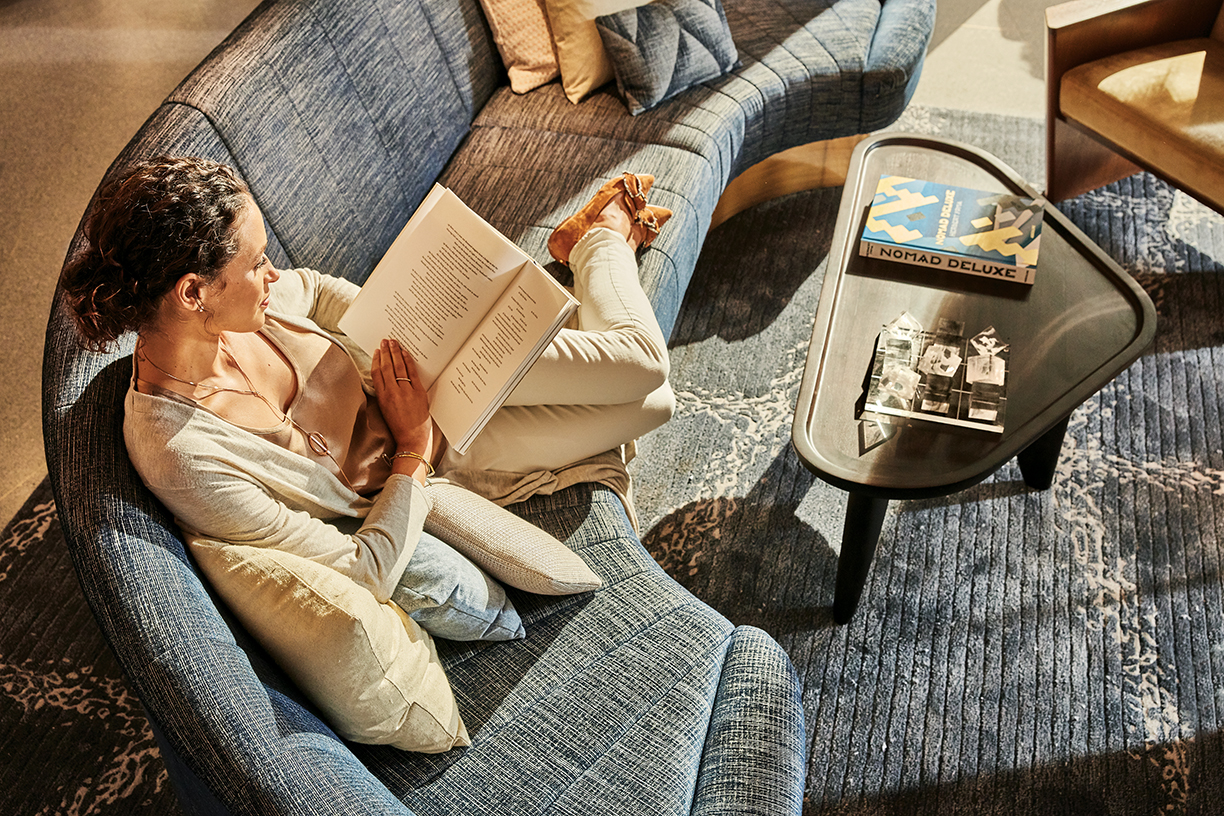
Photo courtesy of The James Hotels
Whether a hotel, resort or apartment complex, health and wellness amenities are in higher demand than ever from tourists seeking to enhance themselves physically, psychologically and spiritually.
According to the Global Wellness Institute (GWI), a non-profit organization for the wellness industry, the wellness economy grew by 10.6 percent between 2013 and 2015. Wellness tourists spent about $563 billion in 2015, and the GWI predicts the total expenditure of wellness tourists will grow by another 43 percent between 2015 and 2020.
Curated exclusively for guests of The James Hotels, Four Bodies Wellness perfectly embodies the idea of wellness tourism. The in-room wellness program was designed to help balance all four bodies — physical, mental, spiritual and emotional.

Photo courtesy of The James Hotels
Whether guests feel stressed, disconnected or lacking inspiration, the four partners of the Four Bodies Wellness have curated offerings specifically catered to each area of the body.
From in-room TV Kundalini Yoga sessions, one-on-one sessions with intuitive counselors to in-room TV workout sessions, collaboration among the four partners has led to the creation of a holistic experience. “To feel really well, we need to think about all of the different areas of our well-being,” says Ruby Warrington, the curator of the emotional program.
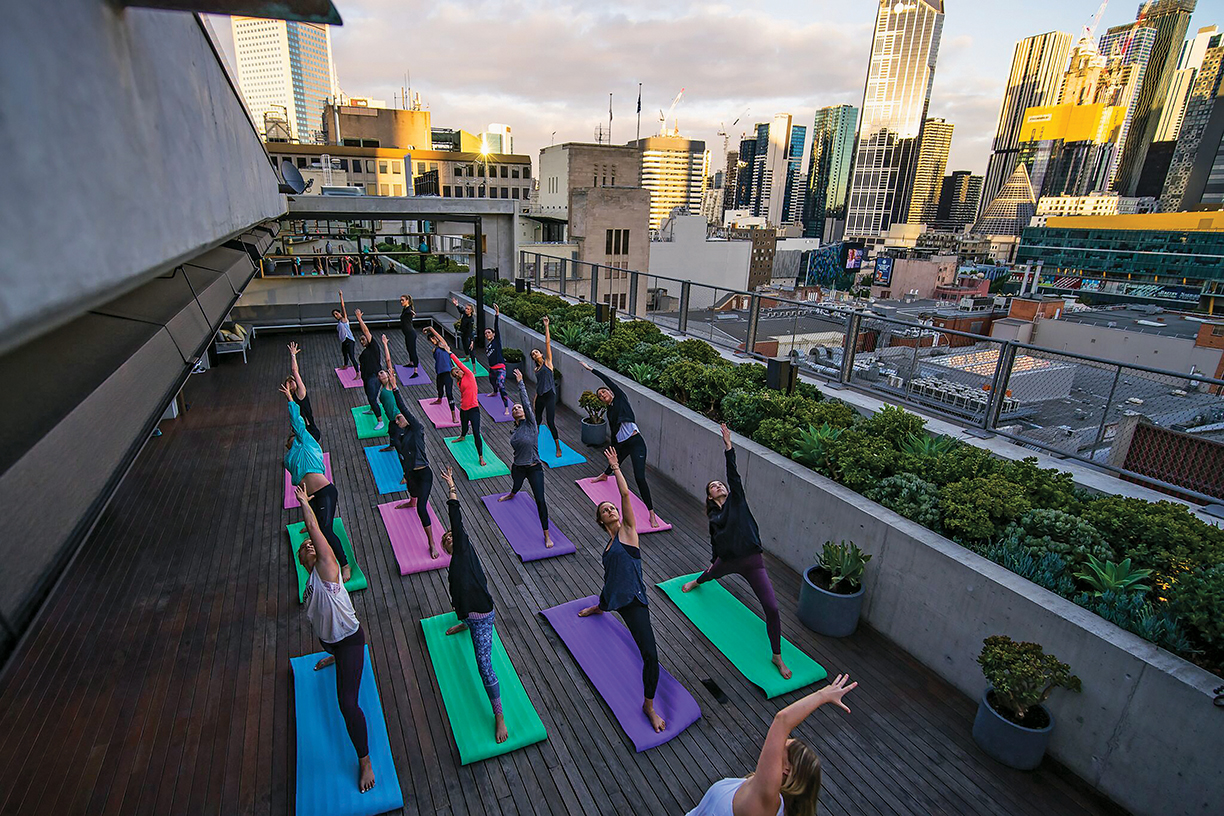
Photo courtesy of QT Hotels & Resorts
According to Warrington, wellness tourists are increasingly using travel as a way to recharge. “Time alone in a hotel can be very valuable,” she says. “We can really use that time as a way to reconnect ourselves.”
Fulfilling a similar need, QT Hotels & Resorts has introduced “Yoga in the Sky,” a pop-up rooftop yoga series, at QT Melbourne.
The series is an “opportunity for people to connect both with themselves and with others,” according to Lee Davey, general manager at QT Melbourne. “The great ambiance on our rooftop, paired with guidance from professional yoga instructors, the energy of a live DJ and the breathtaking skyline views, all combine to create an absolutely one-of-a-kind experience.”
From Chicago to Australia, wellness tourists are emerging as “people are realizing the importance of taking a moment to pause during the day and re-center,” Davey says. “It’s important to escape for a moment and focus your energy on body, mind and soul,” and wellness tourism allows for just that.
Residential developments are increasingly incorporating oversized art, and it’s bigger and better than ever.
These powerful and room-defining pieces each have a huge impact on the spaces they inhabit, drawing the eye in new directions. Here are four examples of NYC luxury developments spearheading this trend in a major way, commissioning local artists to create unique, oversized artwork.
525 West 52nd Street
Upon walking through the grand, double-height entrance, residents pass under Rachel Mica Weiss’ “Inverted Arches.” Commissioned by Art Assets, the 20-foot entrance piece made of nylon rope creates striking silhouettes and intricate, dramatic shadows that change throughout the day. Rachel’s use of industrial materials and hand-crafted techniques seamlessly integrate art and architecture, while simultaneously highlighting the history of the industrial neighborhood and reflecting the daily lives of residents.
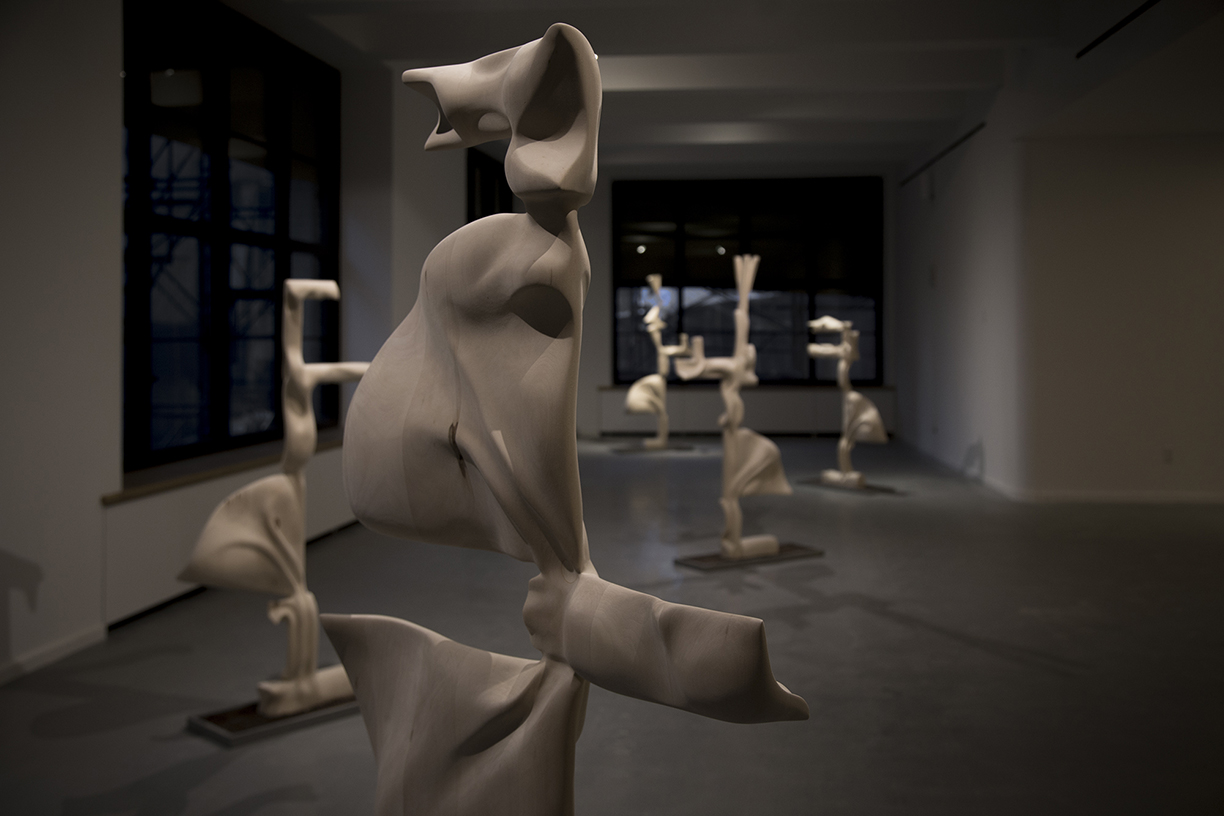
Photo courtesy of Danielle Gottesman
The Jackson
This lobby was designed with a stunning double-height, floor-to-ceiling glass art installation that was inspired by the building’s neighbor, MoMa PS1. The Long Island City condominium’s developer commissioned artist Tom Fruin to curate a one-of-a-kind mosaic glass-art wall in the building’s entryway, giving the space a unique gallery feel.

Photo courtesy of Qualls Benson
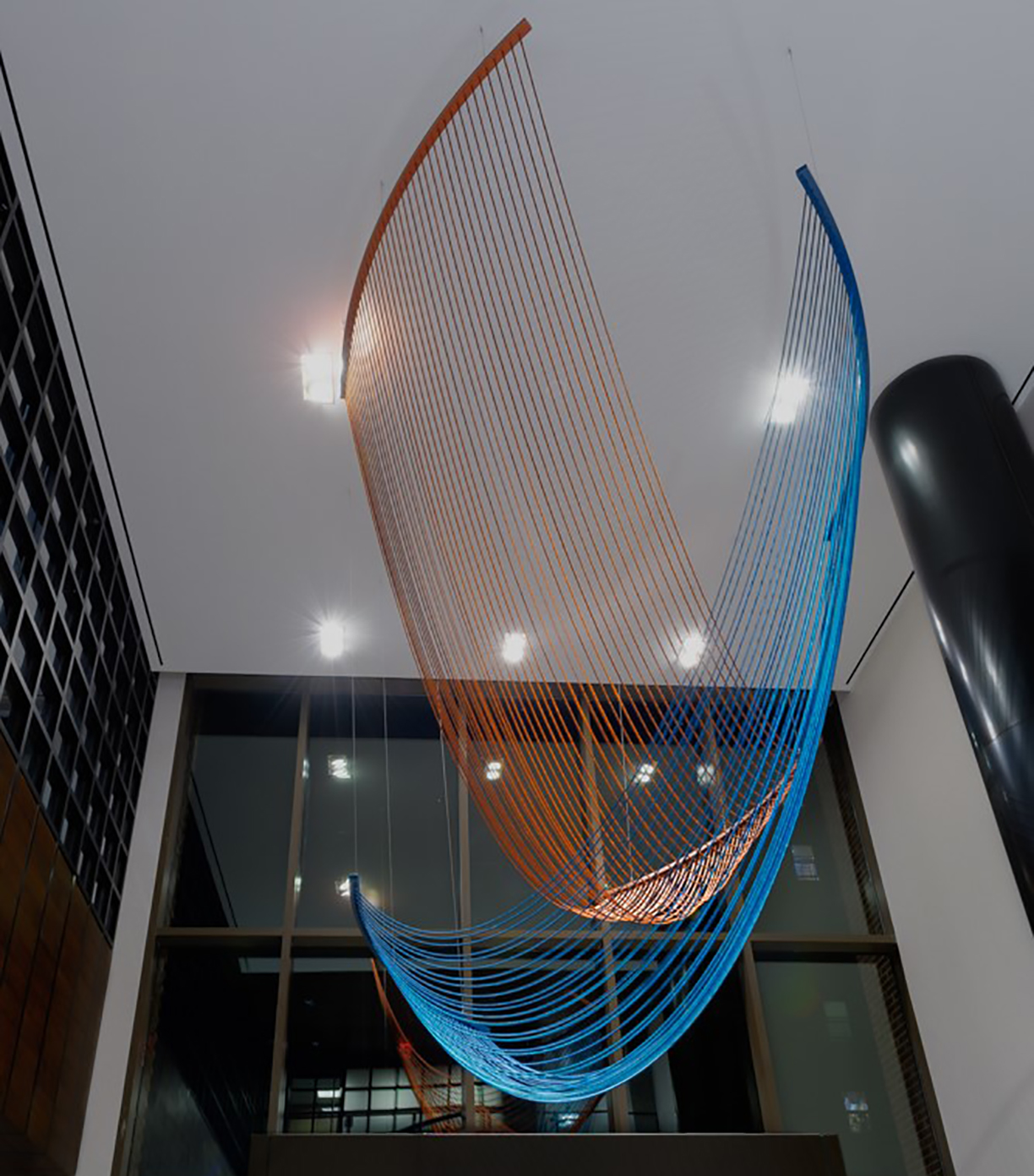
Photo courtesy of Art Assets
90 Morton
This boutique condominium features an entire gallery exhibition of eye-level floor sculptures curated by artist Danielle Gottesman.
Gottesman was inspired by the architectural floor plans of the property, and when adding light behind these pieces, one can actually see the shadows of the floor plans.
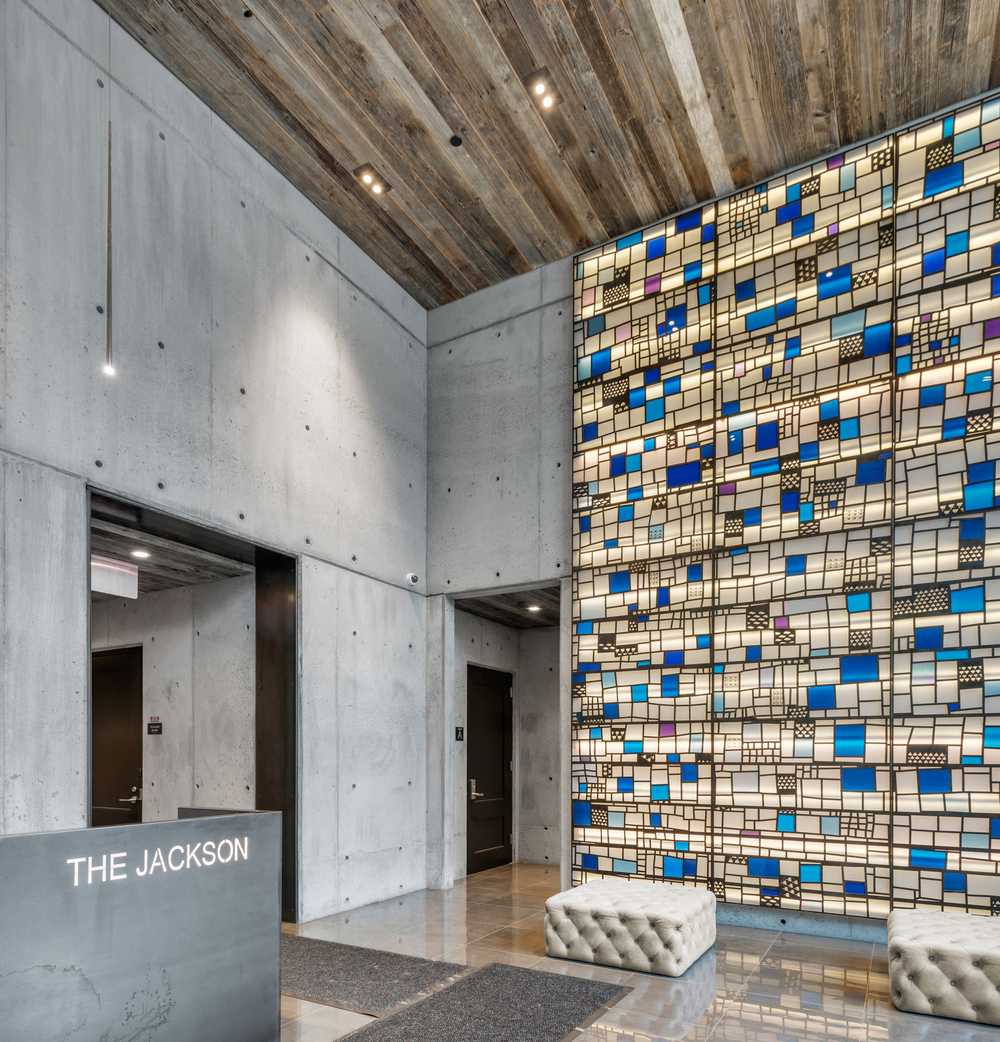
Photo courtesy of Modern Spaces
50 West
A glass-walled exhibition space in the lobby of 50 West is hosting a rotating display of art. The first piece on view is a 10-foot-tall twister sculpture of white powder-coated aluminum by the artist Alice Aycock.
Alice’s work can be found in numerous collections including the Museum of Modern Art, the Whitney Museum and the National Gallery of Art.
High-end restaurants collaborate with residential buildings in major cities such as New York and Boston to create the ultimate experience for residents.
Waterline Square and Cipriani
Waterline Square has been designed by Rafael Viñoly Architects, Richard Meier & Partners Architects and Kohn Pedersen Fox Associates to create an iconic collection of luxury residential buildings on one of the last remaining waterfront development sites on the Upper West Side of Manhattan. The masterplan encompasses nearly five acres and will be located in Manhattan along the Hudson River from West 59th Street to West 61st Street where Midtown meets the Upper West Side.
Located within Two Waterline Square, designed by KPF, the groundbreaking development will be home to the first-ever experiential food market by the Cipriani family.
The Cipriani family will develop 28,000 square feet of space for a large-format culinary experience with multiple food and beverage establishments, including a market, restaurants and fast casual outlets. Martin Brudnizki, the internationally-acclaimed, London-based interior designer, will design the new Cipriani food hall.
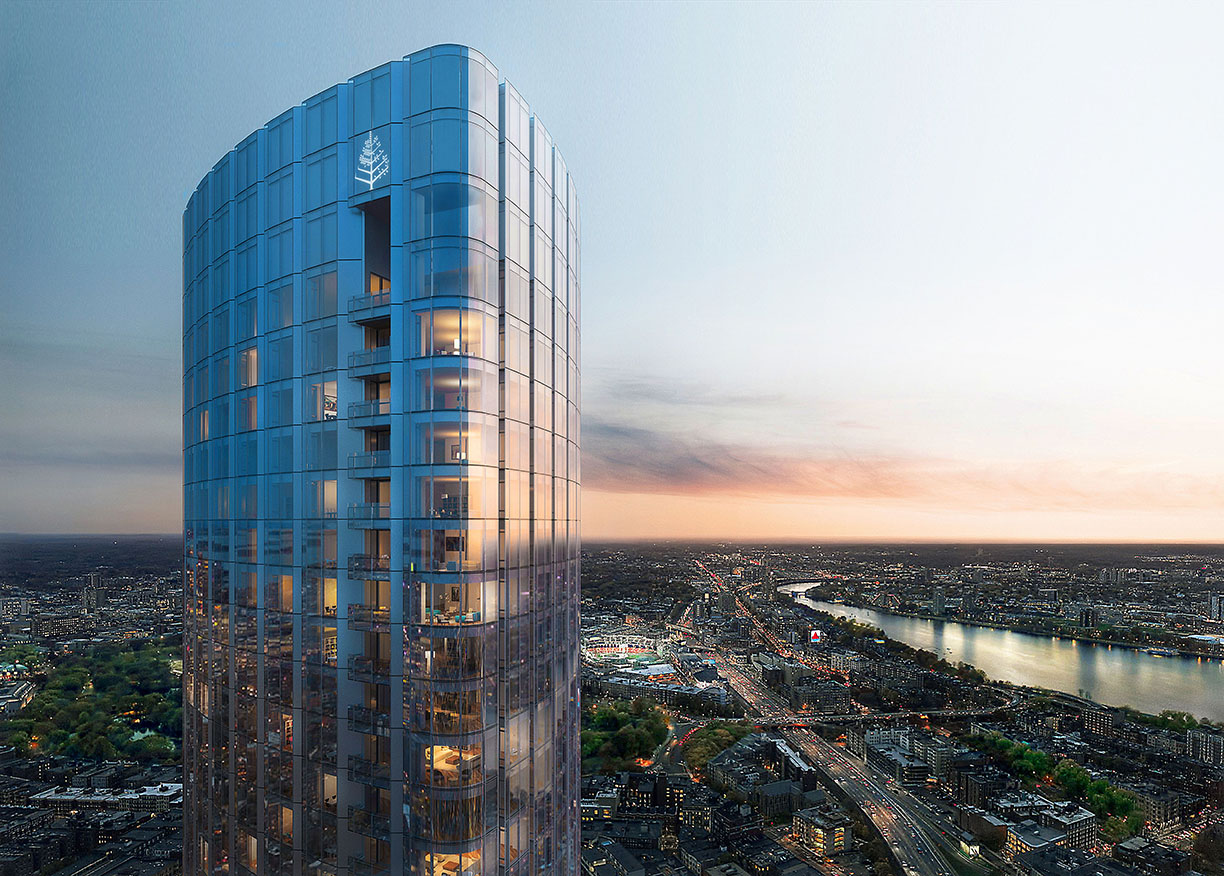
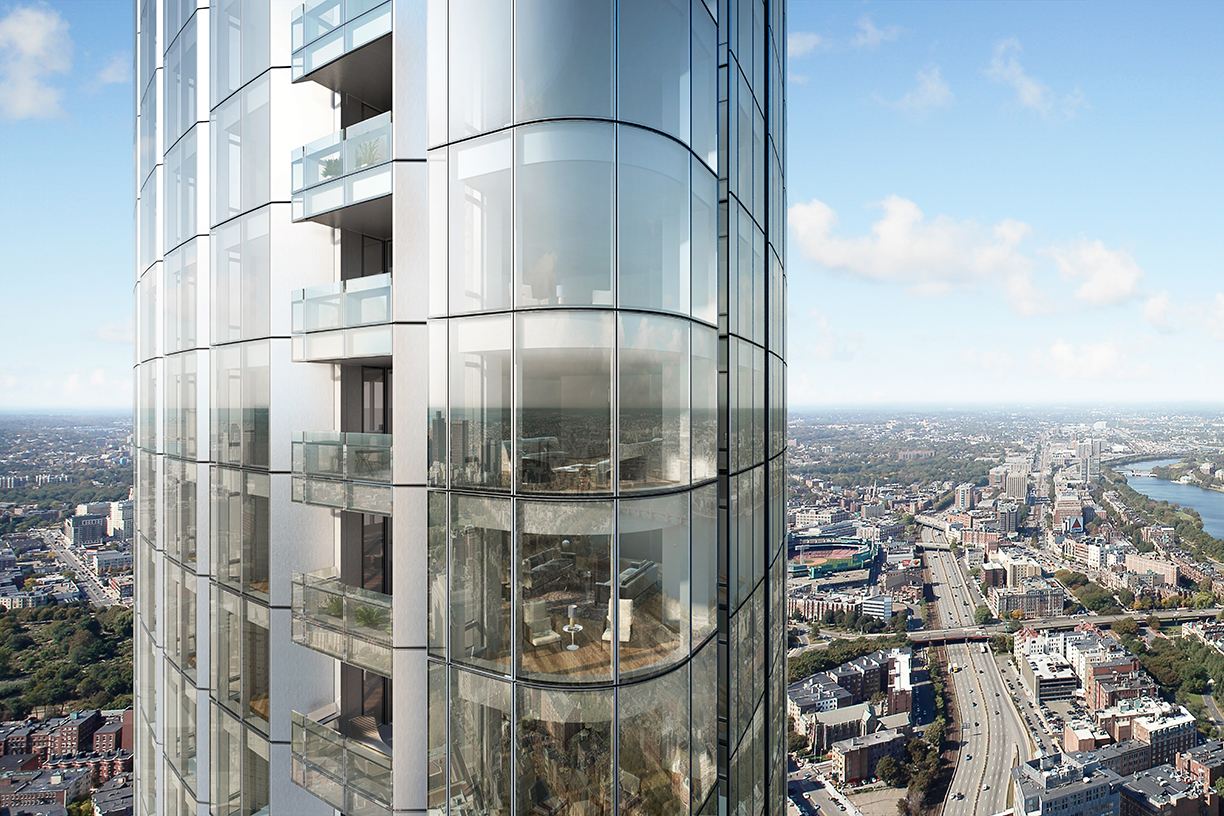
Photos courtesy of Four Seasons Hotel & Private Residences One Dalton
Created and co-founded by acclaimed chef Rainer Becker, Zuma takes its inspiration from the informal and popular Japanese izakaya, where guests enjoy a relaxed dining and drinking style that uniquely embraces every element of Japanese cooking under one roof. Zuma takes this ideology, and in an elegant and contemporary environment, offers a modern Japanese dining experience that is authentic, but not traditional.
Developed by Carpenter & Company, the Four Seasons Hotel & Private Residences One Dalton Street, Boston, is slated to become New England’s tallest residential tower upon its completion. Designed by legendary architect Henry N. Cobb, in collaboration with Cambridge Seven Associates, the 742-foot tower will feature 160 luxury condominiums and the second Four Seasons hotel in Boston. Celebrated designer Thierry Despont has crafted custom interiors for the residential lobby and 50th floor Club Lounge.
30 Park Place and CUT by Wolfgang Puck
Located in Tribeca at the corner of Church Street and Park Place, 30 Park Place is the tallest condominium tower to grace the Downtown skyline at 926 feet, with panoramic views of Midtown Manhattan, the Hudson and East Rivers, the New York Harbor and Statue of Liberty.
30 Park Place is designed by celebrated architect, Robert A.M. Stern, developed by Silverstein Properties and offers 157 residences in a mix of one- to six-bedrooms. 30 Park Place also features nearly 40,000 square feet of amenities, as well as a full suite of hotel services, all managed by Four Seasons Hotels and Resorts.
The Four Seasons Hotel New York Downtown sits below the private residences at 30 Park Place. Occupying the first 24 floors of the tower and known for its five-star services, experiences and amenities, The Four Seasons Hotel New York Downtown is home to CUT by Wolfgang Puck, the celebrity chef and restaurateur’s first and only New York restaurant. Accessible through a secret door on the residents’ side of the building, 30 Park Place owners never have to leave the building to dine at Puck’s restaurant.
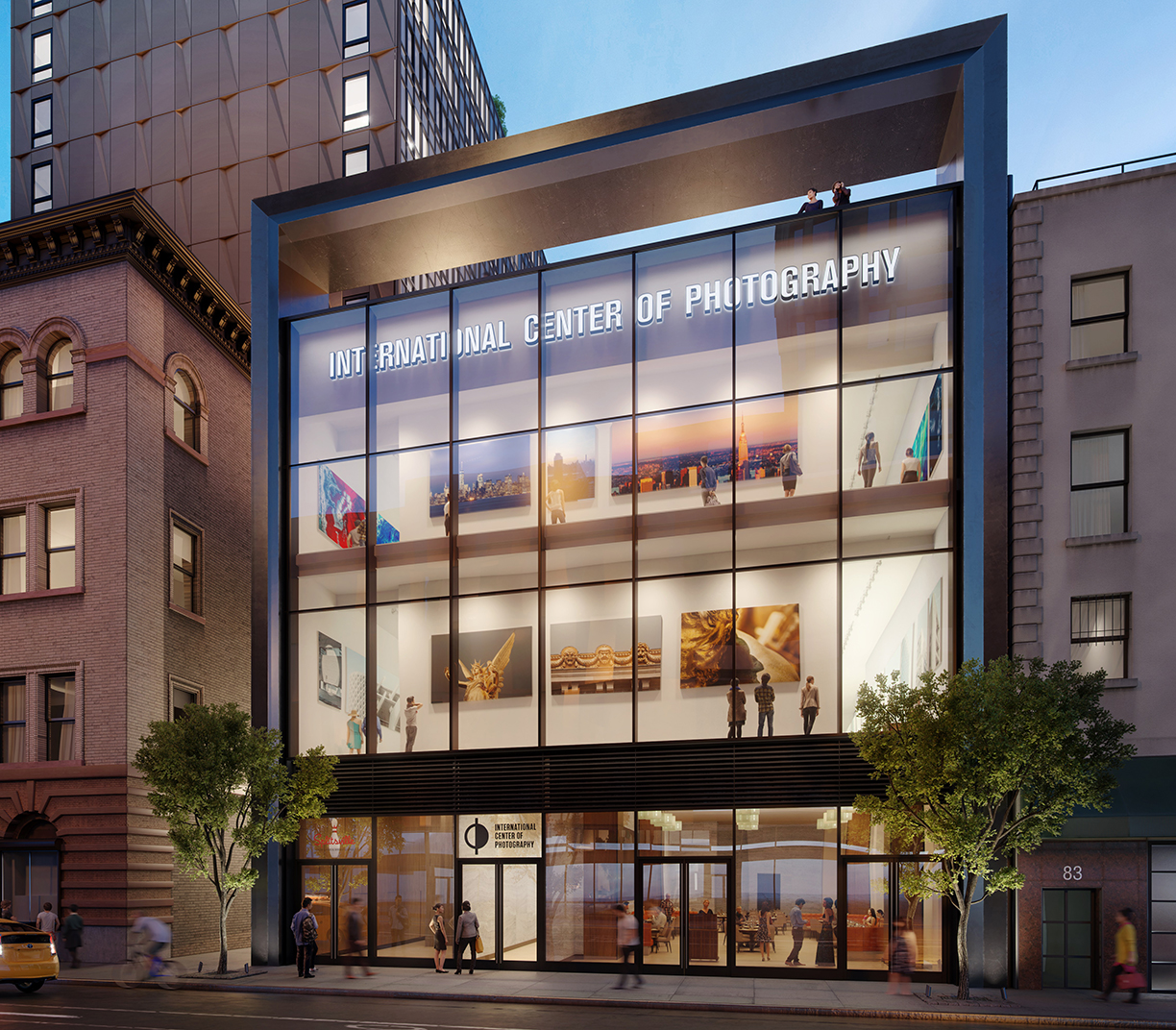
Photo courtesy of Moso Studio

Photo courtesy of Joël Robuchon
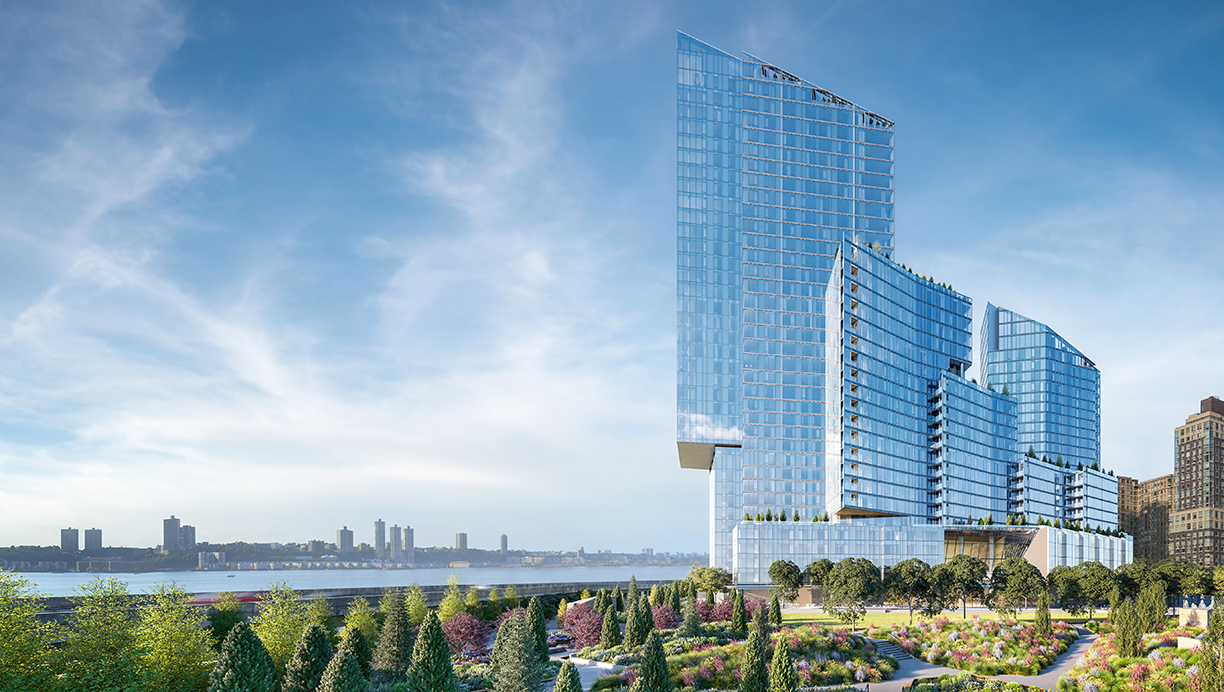
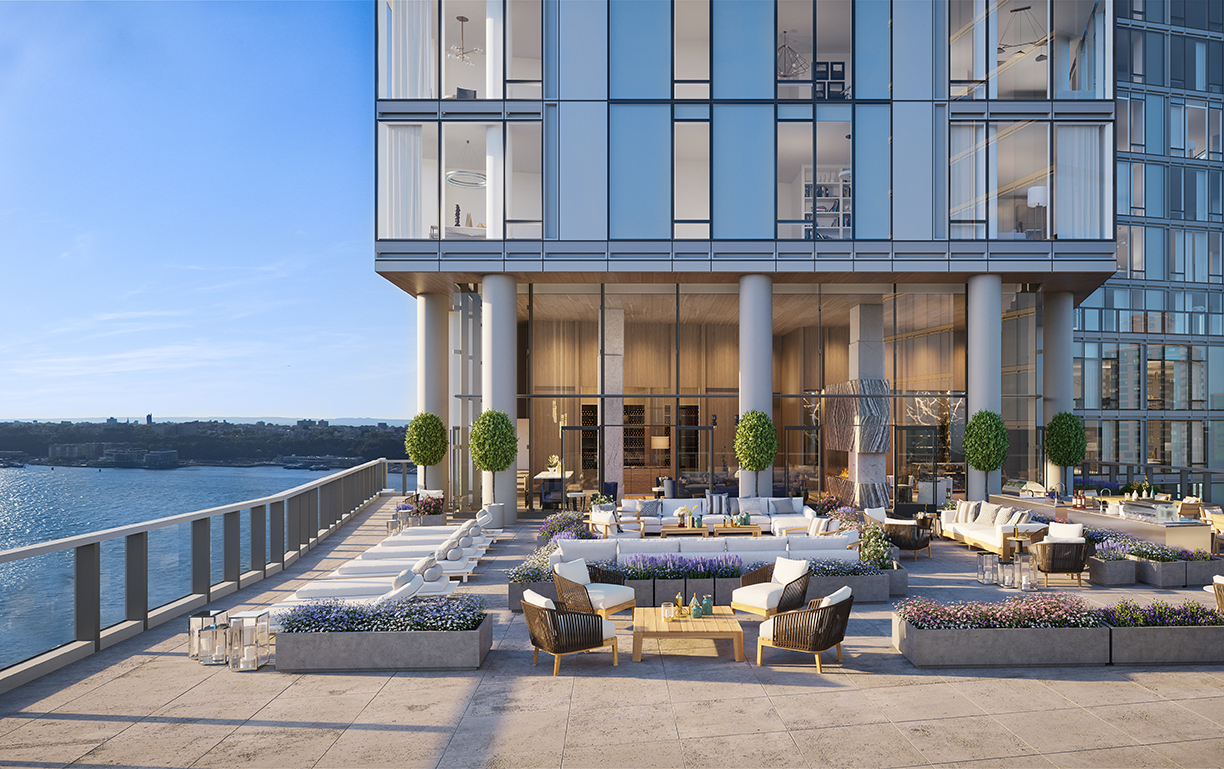
Photos courtesy of Noe & Associates with The Boundary
Four Seasons Hotel & Private Residences and Zuma
Four Seasons Hotel & Private Residences, One Dalton Street, Boston has announced its partnership with internationally acclaimed celebrity-studded restaurant group, Zuma, which will offer world-class cuisine to One Dalton residents, hotel guests and locals alike in early 2019. The Boston location marks the company’s first collaboration with Four Seasons Hotels & Resorts and its fourth location in the United States — part of a successful expansion into the American market.
The restaurant will showcase bold flavors and simple presentation combined with an environment of sophisticated and stellar service. Zuma will bring its signature culinary approach with a touch of local flavor to Four Seasons Hotels & Resorts’ upcoming Boston location, which will be located on the third floor of One Dalton and designed by Noriyoshi Muramatsu of Tokyo-based Studio Glitt.
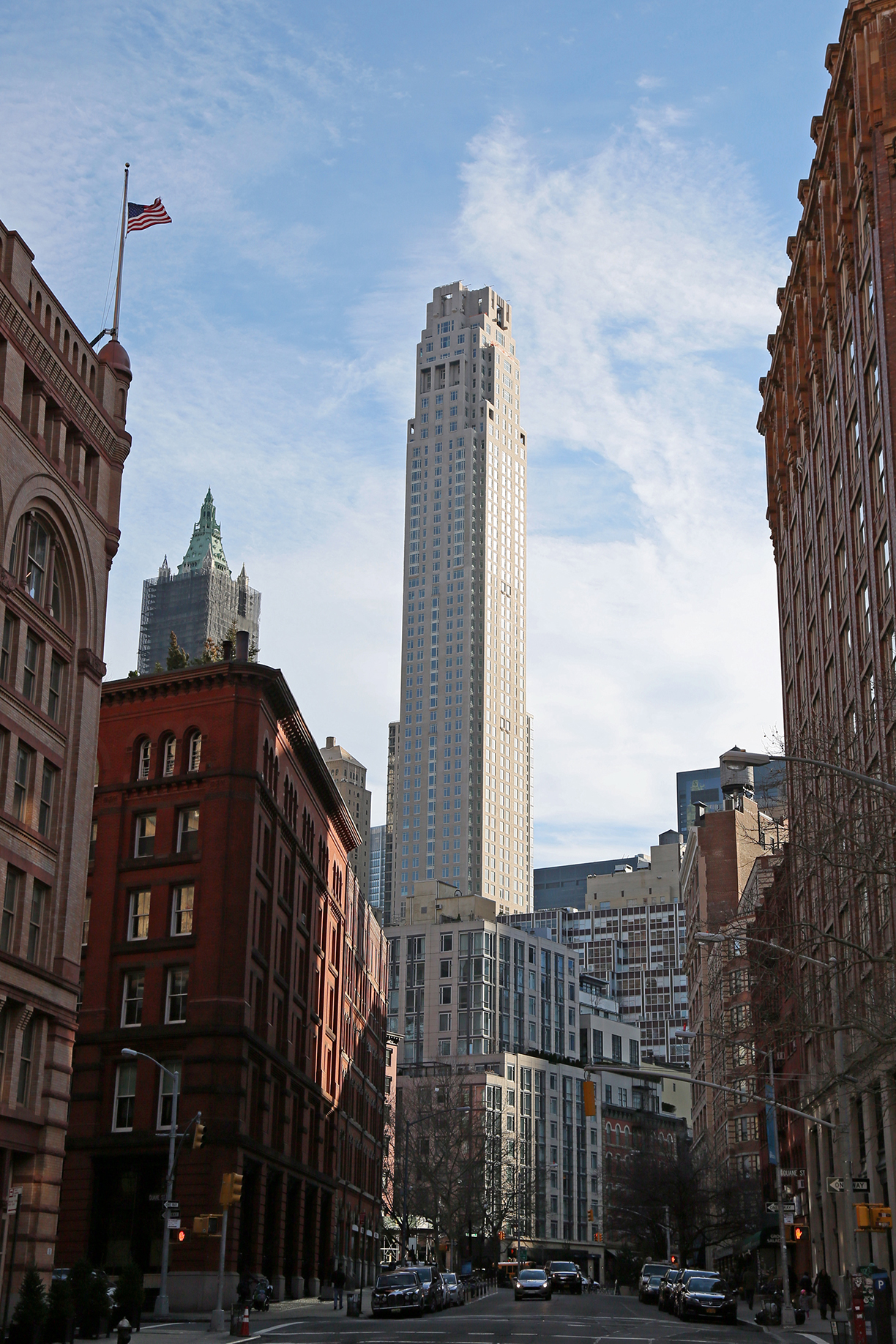
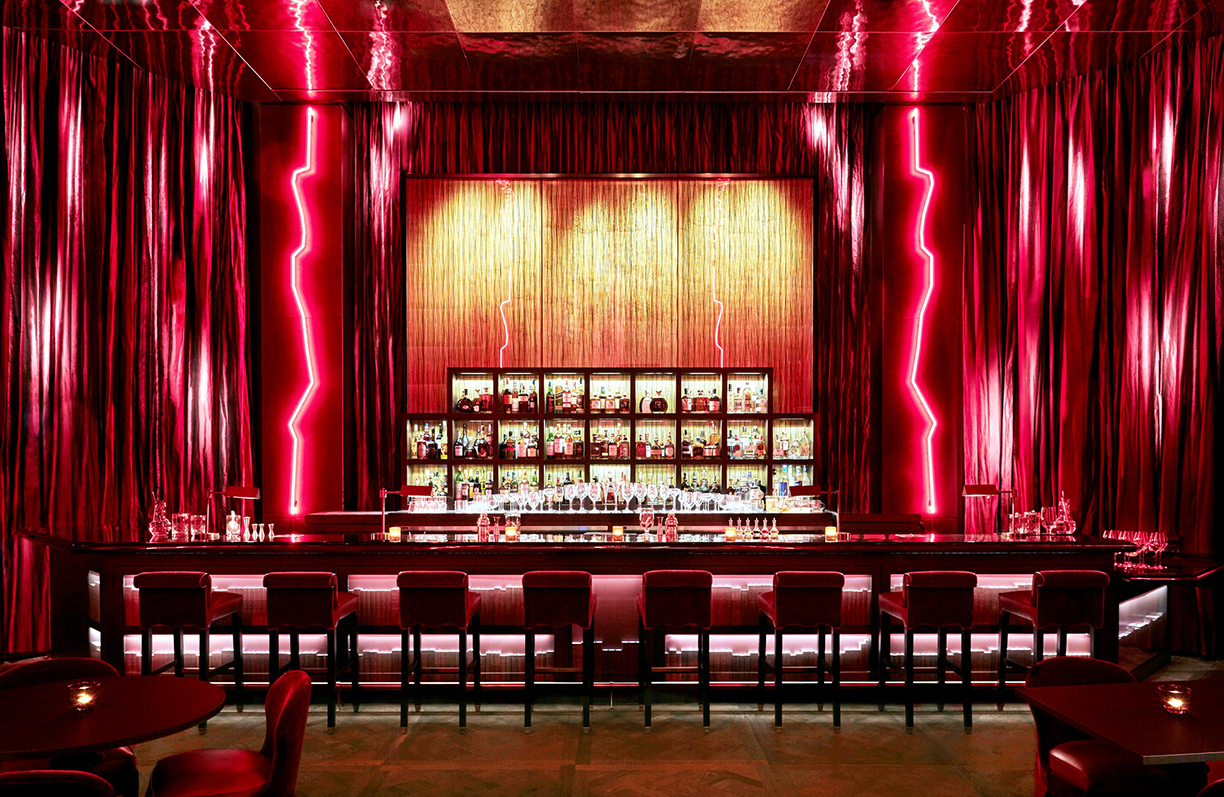
Photos courtesy of 30 Park Place
242 Broome and Make It Nice
242 Broome is the first condominium within Essex Crossing, a planned mixed-use development comprising residential, office, retail, cultural and community space on Manhattan’s Lower East Side. The 14-story, 55-unit luxury building designed by SHoP Architects will also be the new home of the International Center of Photography, which will feature an event space run by Make It Nice — the hospitality group from Eleven Madison Park.
The co-owners of Make It Nice, Will Guidara and Daniel Humm, continue to transform the world of dining with their critically acclaimed restaurant Eleven Madison Park, which is currently rated the best restaurant in the world on The World’s 50 Best Restaurants list, possesses three Michelin stars and received a four star review from The New York Times in 2015. The pair’s Make It Nice hospitality group also oversees the food and beverage spaces at The NoMad hotels in New York and Los Angeles in addition to Made Nice in The NoMad where seasonal dishes are served in an elevated counter service environment.
Make It Nice’s collaboration with ICP marks its first off-site partnership. Guests attending events in the dramatic bi-level space on the top floors of ICP can expect the same outstanding hospitality and exquisite food intrinsic to these distinguished restaurants.
One Hundred East Fifty Third Street and Joël Robuchon
Soaring 63 stories with a collection of 94 contemporary homes, One Hundred East Fifty Third Street is a striking new modernist architectural landmark from Foster + Partners, which offers the highest level of lifestyle services and comfort. Residents at One Hundred East Fifty Third Street will enjoy the distinct privilege of sharing their address with a restaurant by Joël Robuchon, the world’s most decorated Michelin-starred chef. The tower is anchored by a soaring bi-level space designed by Joseph Dirand that will feature two highly anticipated dining concepts slated to open this year. Residents will receive preferred access to these restaurants as well as in-home dining options.
“We are thrilled to partner with Joël Robuchon and Aby Rosen on this exceptional project,” said Alex Gaudelet, CEO of Invest Hospitality. “The combination of the chef with the most Michelin Stars in the world and one of New York’s most audacious visionaries is going to make for an iconic venue.”
In addition, the building offers super luxe, spa-inspired amenities designed by AD-100 designer William T. Georgis. They include a 60-foot sunlit swimming pool, a cardio room, weight room, pilates/ballet room, yoga room, sauna, steam room, spa treatment rooms and his-and-her changing rooms and showers.
Residences at One Hundred East Fifty Third Street are a mix of tower-style units with skyline views and a specialized collection of loft residences on the bottom floors, which feature concrete walls and floors and are specifically designed to accommodate large art collections. Pricing for available units in the building begins at $2.3 million for a studio, and go up to $65 million for the 6,760-square-foot penthouse.


